#British India Steam Navigation
Explore tagged Tumblr posts
Text
Das Schulschiff „Australia“
DADG-Schiffe bei der British India Steam Navigation Company (BI) Titelbild: Das BI-Schulschiff „Australia“ im Südlichen Ozean 1932, Ölgemälde von Richard D. Crow; Quelle: https://www.benjidog.co.uk/recollections/Richard%20Crow2.html Die British India Steam Navigation Company (BI) war eine der bedeutendsten Reedereien in der Geschichte der Seefahrt. Im Laufe der Zeit besaß die BI über 500 Schiffe,…
#Australia#BI#British India Steam Navigation#DADG#Dampfschiff#Deutsch-Australische Dampfschiffs-Gesellschaft#Erster Weltkrieg#Shipping Controller
0 notes
Text
CIV VII; A defense of civ choices
I have seen significant backlash on the forums regarding Firaxis' choices in regards to what civs to include and not to include within Civ VII.

The image above contains the complete list of base game civs, as understood from official sources and leaks. The most common issues levied agienst the roster are:
No British Civ in the Modern Age
No Portuguese Civ in the Exploration Age
6 slots being dedicated to China and India
A majority of countries lacking a true "Historical" pathway
After mulling over the list for a long time, I eventually realized that I'm okay with the compromises made here, even if they lead to some occasionally strange results.
Let's agree on one fact to start: 30 civs was the maximum. Given the constraints of developer time and resources, we couldn't have gotten any more Civs in the base game. If that is the case, what needs to be prioritized when choosing what goes into the game. I would argue that the intention was diversity in game play.
When I say "diversity in game play" I'm not referring to capital D "Diversity", but rather the different play styles and a game allows. If a Civ game were comprised of only militaristic Civs, then the experience would be lesser. The game would either boil down to who can be the best at war or make war useless as everyone is good at it. Civ, despite being a symmetrical grand strategy game, needs asymmetries in the strategies a player would employ.
Civ VII seems to want to embrace all styles of play. Give the age goal mechanics, ideally you want to be able to choose a CIV in the next era that is able to capitalize on good science, culture, or what have you from the previous era.
That brings me to Britain and Portugal. Are they important historically? Yes! Do they bring something new to the table? I'd argue no. Britain is a shoe in for expansion and economics. An economic powerhouse built on a massive empire. Heartbeat of steam. That also all applies to America. Similarly, we have Portugal. Great navigator, colonizer, and empire builder. They sail off into distant lands with intentions to bring back as much as they can. And so did Spain.
The question for them is not "why not replace someone?", but rather "why America over Britain?" and "why Spain over Portugal". For the former I don't know, and honestly I find the decision to be one built mostly on preference. For the ladder I'd assume it's because Spain has a stronger military association with their actions in the new world, allowing them to be a naval civ with a military focus rather then the near total economic expectations that Portugal holds.
As for China and India, we find Civs that have very unique gameplay styles. The Ming live with a tradeoff of science for adaptability. The Chola are the highly diplomatic naval power. The Qing works as a land empire wanting international trade, with issues of falling behind on science. These are experiences that aren't in the game otherwise. Compare if we had a German trifecta, where we'd run into issues with redundancies with other military land based empires or diplomatic empires.
Oftentimes we'll find that the historical choices are going to run into issues of redundancies. While any given European power is not interchangeable, co-existence leads to similarities, both between eras and within an era. Venice is a civ I would love to see return as a path from Greece or Rome, but I acknowledge that it would be a similar experience to Chola. If this game has 30 unique civs, I don't want two of them to play the same. Even if that means that it looks a bit like a hodgepodge
This isn't all to say that these civs will never come, that there aren't other factors involved, or that I don't care about the history. I can't wait to see how they try to differentiate Portugal or Britain or any other power that's been left out. The Civ list does have issues; there's somewhat worrying implications to having no native modern era civs, South America doesn't get anything, and the middle east feeling strangely bear. But, all and all, I don't mind the list we've been given because it looks fun. And why else would I play CIV VII
4 notes
·
View notes
Text
RRR Real-Life Heroes at the Credits
For those curious about heroes seen at the end of the popular Indian movie,”RRR”. The credit goes to Yash-ty7fc on YouTube, as seen here in the comment section of the official music video.
1. 1:36 Subash Chandra Bose: You see INA behind him
2. 1:40 Sardar Vallabhbhai Patel: You see India's map behind him because he united princely states' territory into India after independence
3. 1:43 Kittur Rani Chennamma: You see an army behind her because she led an armed resistance against the British East India
4. 1:46 V.O.Chidambaram Pillai: You see ships behind him because he founded the Swadeshi Steam Navigation Company in 1906 to compete against the monopoly of the British India Steam Navigation Company.
5. 2:36 Bhagat Singh: You see judge behind him because he was given death penalty at a very young age and it united people across India
6. 2:39 Tanguturi Prakasam Pantulu- He was called Andhra Kesri(Andhra's Lion) so a Lion with Andhra's map
7. 2:43 Kerala Varma Pazhassi Raja Army behind him because he fought wars against EIC known as Coitte wars
8. 2:46 Chhatrapati Shivaji Maharaj- Edit: Pratapgarh fort behind him. Shivaji Maharaj slayed Afzal Khan below it
3 notes
·
View notes
Photo

On or around 19th February 1792 Arthur Anderson was born at Böd of Gremista, Lerwick.
Having recognised his son was intelligent, and having a great regard for education Arthur was sent to a small elementary school set up by the Rev John Turnbull. However, aged 12, He had to leave school to earn some money. He was employed by Thomas Bolt of Bressay, a fish-curer and general merchant. Arthur was given the job of beachboy, cleaning fish, then spreading them, when salted, on the beach. However, Bolt soon recognised Arthur’s intelligence, and put him to work in his office, where he acquired useful business habits. He also continued to see the Rev Turnbull, who further satisfied his urge to learn.
By the time Arthur was 15, Britain was at war with France, and British navy ships frequently visited Shetland looking for “recruits”. The Press Gang forcibly removed young men to enrol in the Navy, and in 1807 Arthur was frogmarched to a boat waiting to take him to the Navy ship offshore. Fortunately, Bolt’s guarantee that Arthur would join up at 16 saved him, and the following year Arthur found a berth on a visiting warship bound for Portsmouth, and the Royal Navy.
By 1809 he was midshipman on board the 64-gunner HMS Ardent, but soon realised that expenses as an officer required more money than he possessed, so in 1810 he transferred to the smaller HMS Bermuda . There he served five years as captain’s clerk , reading avidly and becoming fluent in Spanish and Portuguese. He left in 1815, one of 3000 Shetlanders who served in the Navy during the Napoleonic Wars.
Seeking work in London, Arthur’s uncle, Peter Ridland, introduced him to Brodie Willcox, a young man starting out as a ship-broker. Employed at first in Willcox’s office as a clerk, the company’s connections with Spain and Portugal meant he soon became invaluable, and in 1822 joined Willcox as a partner in a firm of ship charterers. That same year he married Mary Ann Hill, daughter of a shipowner.
The new firm proved successful, and soon acquired its own ship, later fitted out with guns and used for Portuguese trade. During subsequent civil wars in Spain and Portugal, the company supported the royalists, including shipment of arms and extra vessels – a sound decision, resulting in contracts with both countries to deliver mail, and entitlement to fly a flag embodying the colours of Spain and Portugal.
Despite traditionalists’ misgivings, they began increasingly to use steamships, forming the Peninsular Steam Navigation Company, then in 1840 the Peninsular & Oriental Steam Navigation Company– the beginning of P&O, with Anderson and Willcox directors. While Willcox ran the company in London, Anderson travelled widely, problem-solving. Within ten years, they sailed to India and the Far East, owning property in many countries, and forming an essential part of British trade. This included transportation of opium from India to China – a legal trade at that time, although not universally approved of by the British public.
Having established these regular routes for their ships, Arthur suggested a way to avoid the hazardous journey round the Cape of Good Hope would be to construct a canal between the Mediterranean and the Red Sea, via Suez. However, the British disagreed, and in 1869 France and Egypt collaborated in building the Suez Canal. Meanwhile, Arthur arranged transportation of mail and passengers overland by horse-drawn carriages, with coal for the steamships carried by 4000 camels.
During all this activity, he never forgot his birthplace His philosophy was , “Wealth ought not to be sought for its own sake, but as a means of being useful to others.” It’s a pity the now owners of P & O don’t hold the same beliefs!
In 1836 he founded Shetland’s first newspaper, The Shetland Journal, financed, edited and largely written by himself. He attacked the power wielded by lairds over crofting and fishing, as well as suggesting social improvements, and his Liberal policies proved very popular, including his petition to Parliament protesting against the invidious Corn Laws. Unfortunately, it proved too difficult to produce the paper from London, and after a few years it closed down
In an attempt to break the monopoly of the lairds, and put an end to fishing tenure, he set up the Shetland Fishery Co in 1837on the island of Vaila. He aimed to open up new markets, and provide work for men too poor to have their own boats He introduced new methods, and paid wages. Initially successful, his lease expired in the ‘40s, his health was beginning to fail, and business ceased. However, the lairds’ grip on fishing could be loosened – young men had discovered an independence not available to their parents, and meant to keep it.
In 1839 he was largely responsible for Shetland’s first steamship, enabling speedier mail services. Also, from 1847-1852 he was Liberal MP for Orkney and Shetland.
Nor did he forget the women. Shetland women knew how to knit and spin, to supplement the family income, but usually they “sold” their knitwear to local merchants in exchange for goods, not cash – the invidious Truck System. Arthur encouraged knitting of lace items for a friend’s shop in London, for payment in cash, and in 1837 he presented some fine examples to Queen Victoria. Impressed, she immediately ordered a dozen pairs of lace stockings, the court ladies followed suit and a burgeoning fine lace industry emerged.
Since his own schooldays, Arthur had an interest in the education of those unable to afford private schooling. In 1852 he employed a teacher in the Skerries, then in 1862, despite no local support whatsoever, he built the Anderson Educational Institute in Lerwick, to provide secondary education. It featured a relief sculpture of his parting with Thomas Bolt in 1808, whose advice was to become the school motto – “Dö weel an’ persevere”. This resulted in increased opportunities for Shetland youngsters, and greatly changed the structure of local society. Outwith the isles, he also set up schools in Southampton for the children of P&O employees, while in London he provided the Norwood Working Men’s Institute for social, cultural and trade union purposes.
When his beloved wife died in 1864, he fulfilled her wish of erecting the Widows’ Asylum in Lerwick, (now the Anderson Homes,) intended for the widows of Shetland fishermen and seamen. A separate fund, the Shetland Widows’ Trust, still operates today.
In 1862 Brodie Willcox died, whereupon Arthur became Chairman as well as Managing Director of P&O. However, his poor health finally proved too much, and in February 1868 he too died, aged 76 and still working.
6 notes
·
View notes
Text
Explore Shimla and Manali Tour Package at Best Price

A trip to Shimla and Manali is an enchanting adventure through the stunning landscapes and charming hill stations of Himachal Pradesh, India. These two destinations offer a delightful mix of natural beauty, thrilling activities, rich culture, and peaceful relaxation. It's an exciting journey full of unforgettable experiences. Book your getaway with our Shimla-Manali tour packages and enjoy an unforgettable time with your loved ones.
Shimla and Manali boast a rich history shaped by British colonial heritage and ancient traditions. In Shimla, a walk along Mall Road, adorned with colonial-era architecture, offers a nostalgic journey through time. Meanwhile, in Manali, the old Manali village enchants visitors with its centuries-old temples, quaint cottages, and cobbled streets, evoking a sense of timeless charm. As you wander through these picturesque streets, you'll find yourself immersed in the captivating tales of the past.
Stroll leisurely through the apple orchards of Manali or wander amid the pine forests near Shimla. The tranquil charm of these hill stations extends far beyond their iconic viewpoints. Simply inhaling the fresh mountain air and listening to the gentle rustle of leaves is a meditative experience in itself.
For adventure enthusiasts, Shimla and Manali are a paradise of thrilling activities. Experience the exhilaration of paragliding in Solang Valley, gliding like a bird against the backdrop of snow-covered peaks. Brave the rapids with white-water rafting on the Beas River or navigate lush forests on a mountain bike. In Shimla, serene trails in Chail invite you to trek amidst nature's tranquility, while Manali transforms into a winter wonderland with some of India's finest skiing slopes.
Keep in mind the weather conditions and seasonal suitability of these activities when planning your trip. It’s also recommended to choose reputable adventure operators for guidance and equipment rental, ensuring your safety as you enjoy the exciting outdoor sports in Shimla and Manali.
Immerse yourself in the local culture by attending traditional dance and music performances. In Shimla, you might encounter a Himachali folk dance troupe performing along Mall Road. In Manali, visit a local temple to experience the deep devotion of the community. Join the celebrations during festivals like the Kullu Dussehra or the Shimla Summer Festival to witness the region's vibrant cultural traditions.
Pair this with a delightful culinary journey. As you wander through the lively markets of Shimla and Manali, the enticing aroma of steaming momos and hearty thukpa fills the air. These hill stations are true gastronomic treasures, celebrated for their vibrant street food culture.
Delight your taste buds with local specialties like Chana Madra and Dham in Shimla, or enjoy a plate of Babru in Manali. Be sure to sample the region's renowned teas, from the refreshing mint tea in Shimla to the comforting rhododendron tea in Manali.
In Shimla and Manali, it's not just the destinations you explore but the experiences that embrace you like a cozy shawl in the crisp mountain air. It's about the connections you forge, the flavors you relish, and the moments you treasure like priceless gems. These places are more than mere dots on a tourist map they are living memories waiting to be created, each leaving a distinctive mark on the narrative of your life.
Planning a holiday to Shimla and Manali is bound to be one of the best decisions you'll ever make. By booking an all-inclusive Shimla Manali tour package with us, you can rest assured that every moment will be unforgettable. Our team excels at tailoring experiences to match your preferences perfectly!
At Macaw Travels, we have extensive knowledge of India's popular tourist destinations, such as Shimla and Manali, allowing us to design personalized itineraries that cater to diverse interests, whether it's adventure, relaxation, or cultural exploration.
With our extensive network of local partners and guides, you’ll gain access to exclusive insights and unique experiences. We can take you off the beaten path, revealing hidden gems and unseen wonders that independent travelers may overlook.
We understand that every traveler is unique, and we believe your trip should be a reflection of that. Our tailored itineraries let you select activities, accommodations, and experiences that match your personal preferences, ensuring a truly memorable and customized journey.
When you book your Shimla Manali tour with the Macaw Travels team, you can relax and leave the details to us. We handle everything, from reserving your preferred accommodation to selecting the top attractions, dining spots, and shopping destinations all in one place. This allows you to fully enjoy your vacation without having to worry about the details.
If you prefer a more guided experience, we offer the services of knowledgeable and friendly local guides who can deepen your understanding of Shimla and Manali culture, history, and natural beauty. Your safety is our highest priority, and we ensure that all our partners and service providers meet strict safety standards. Should any issues arise during your trip, our support team is available 24/7 to assist you. What more could you ask for?
For a start to your Shimla adventure, visit the vibrant Mall Road. This lively street is known for its shops, restaurants, and colonial architecture, making it an excellent spot for souvenir shopping and enjoying local cuisine.
Just 2.3 km from there, you’ll find Jakhu Temple, dedicated to Lord Hanuman. Perched atop Jakhu Hill, it offers sweeping views of the town, accessible via a short hike.
Next, explore the Christ Church, a prominent Shimla landmark. Known for its neo-Gothic architecture, it is especially stunning when lit up at night. For those seeking spiritual enrichment, you can also visit the Tara Devi Temple, Kali Bari Temple, Kamna Devi Temple, Laxminarayan Temple, and Sankat Mochan Temple to immerse yourself in positivity.
For those seeking to step back in time, Shimla offers a glimpse into the past with the Himachal State Museum and the Annadale Army Heritage Museum. Architecture enthusiasts will appreciate the Jubbal Palace, Gaiety Heritage Cultural Complex, and Viceregal Lodge, also known as the Indian Institute of Advanced Study. Birdwatchers can explore the Himalayan Bird Park, home to a wide variety of bird species, while nature lovers can visit the Shimla Reserve Forest Sanctuary to observe the region's diverse flora and fauna.
For those wanting to experience the stunning beauty of Shimla, must-see spots include Green Valley, Summer Hill, Scandal Point, Shaily Peak, and Chadwick Falls. These locations not only offer a range of experiences but also provide peaceful retreats for relaxation away from the hustle and bustle. Other notable attractions in Shimla include the Ridge, Ice Skating Rink, Hip Hip Hurray Amusement Park, Indira Tourist Park and Lakkar Bazaar.
When planning your getaway, don't miss the list of attractions in Manali, which will ensure a memorable experience. Highlights include Jogini Waterfall, Bhrigu Lake, The Great Himalayan National Park, Hadimba Temple, Museum of Himachal Culture & Folk Art, Nehru Kund, Van Vihar National Park, Rahala Falls, Vashisht Temple, Manu Temple, and Manali Wildlife Sanctuary. Additionally, explore the charming town of Old Manali, Jana Waterfall, Arjun Gufa, Himalayan Nyingmapa Buddhist Temple and Naggar Castle.
Your Shimla Manali tour will be incomplete without a delightful shopping experience, and our Shimla Manali Tour Packages offer just that. Both hill stations boast a variety of unique, locally crafted items, allowing you to pick up souvenirs that match your tastes and interests. Woolen handicrafts, Tibetan artifacts, and Buddhist souvenirs are among the must-buy items in Shimla and Manali.
When shopping in Shimla and Manali, it's advisable to haggle in local markets, as bargaining is a common practice. However, exercise caution when purchasing expensive items, particularly jewelry and antiques, and ensure their authenticity. Enjoy your shopping adventure in these scenic hill stations!
The peak tourist season in Shimla and Manali is from March to June, with pleasant weather that makes it perfect for outdoor activities and enjoying the natural beauty of the area. However, be ready for large crowds, especially in April and May.
Autumn, from October to November, is also an excellent time to visit these hill stations. The landscapes come alive with vibrant foliage, offering a fantastic setting for photography, trekking, and soaking in the peaceful atmosphere.
If you're particularly interested in snow and winter sports, the winter season (December to February) is the perfect time to visit these destinations. With temperatures potentially dropping below freezing, be sure to pack suitable winter clothing. Also, keep in mind that heavy snowfall may impact road travel, so plan your journey accordingly.
To reach Shimla and Manali, you can choose to travel by air, rail, or road. Among these, road travel is the most popular option. Numerous private and state-operated buses run daily from major North Indian cities to Shimla and Manali. You can opt for deluxe, air-conditioned coaches for a comfortable journey. Be sure to book your bus in advance if you're traveling during the peak season to avoid any inconvenience.
In conclusion, both Shimla and Manali offer an unforgettable experience through the heart of the Himalayas. From Shimla's serene beauty to Manali's thrilling adventures, this trip has something for everyone. Whether you're a nature enthusiast an adventure lover and seeking a peaceful retreat, the Shimla Manali journey provides a diverse and memorable experience. Please visit now for more information https://shorturl.at/z6IW7 and Call Us Now at 7982829260 and Get best deals and discounts on Shimla Manali tour package.
0 notes
Text

Send from Sansgreet Android App. Sanskrit greetings app from team @livesanskrit .
It's the first Android app for sending @sanskrit greetings. Download app from https://livesanskrit.com/sansgreet
V. O. Chidambaram Pillai.
Valliyappan Olaganathan Chidambaram Pillai (5 September 1872 - 18 November 1936) was born in Royal family of Tuticorin. He is popularly known by his initials, V.O.C. and also known as Kappalottiya Tamizhan or "First Indian Helmsman", was an Indian freedom fighter and former leader of the Indian National Congress. Founder of Swadeshi Steam Navigation Company in 1906 to compete against the monopoly of the British India Steam Navigation Company (BISNC). He launched the first indigenous Indian shipping service between Tuticorin (India) and Colombo (Sri Lanka) with the Swadeshi Steam Navigation Company (SSNC), competing against British ships. Tuticorin Port Trust, one of India's thirteen major ports, is named after him. At one time a member of the Indian National Congress, he was later charged with sedition by the British government and sentenced to life imprisonment, and his barrister license was revoked.
#sansgreet #sanskritgreetings #greetingsinsanskrit #sanskritquotes #sanskritthoughts #emergingsanskrit #sanskrittrends #trendsinsanskrit #livesanskrit #sanskritlanguage #sanskritlove #sanskritdailyquotes #sanskritdailythoughts #sanskrit #resanskrit #celebratingsanskrit #vochidambarampillai #chidambarampillai #tuticorin #kapalottiyatamilan #tamilan #steamnavigation #tuticorinport #tuticorinporttrust #ottapidaram #indiannationalcongress #inc #thoothukudi #tamilanadu #tamilnadutourism
#greetingsinsanskrit#sanskritgreetings#sanskrittrends#trendsinsanskrit#livesanskrit#sanskrit#celebratingsanskrit#incredibleindia#kerala#indianarmy
0 notes
Text
Custom Clearance agent in Tuticorin Port
Tuticorin Port Custom Customs Clearance Agent Tuticorin port is having a significant role in the history of Indian shipping industry. The port is named after the nationalist and freedom fighter VO Chidambaram Pillai who dreamed of a Self-reliant shipping Industry in India. As part of INC, he fought for Indian independence. He started the Swadeshi Steam Navigation company to challenge the British monopoly in shipping industry.
0 notes
Text

Monday 17th April
Sunday at sea, traditionally a rest day for the crew but today each watch has been trying to outdo the others with respect getting the maximum speed out of the vessel using the fickle winds that we have been experiencing. So far Jeff and Chris are doing the best (without having to resort to Chris' underwear) but this all changed when the wind died away in the early afternoon and we were obliged to start the engine, stow the sails and begin motoring. The forecast is for the wind to pick up during Sunday night and should be favourable for the next few days.
Sunday evening's meal was expertly cooked by David and we all enjoyed a chicken and cauliflower curry dinner, without Robin's lime pickle which he forgot to put on board - the beers are on him when we get to port. To date Ian has been serving up the majority of our culinary delights and each meal has been great (Note: he occasionally slips in a tuna special - 79 tins to go).
This afternoon the three more mature (in age only) members of the crew who worked for British India Steam Navigation Co Ltd, Robin, Nigel and Chris watched a video of one of the vessels belonging to that company on one of its' voyages sailing from Bombay to the Persian Gulf ports which was filmed in 1984. Both Robin and Chris sailed together on a similar vessel, the Sirdana, in 1962! As you can imagine there was a lot of lamp swinging going on!
Monday early morning update: as forecast the wind filled in at 0300 and we were able to stop the engine and set sail and get back to business. Initially, during Nigel and Ian's watch we experienced light winds however as morning came around (and on Chris and Jeff's watch) the wind picked up and by 0800 we were back to a reasonable speed of 6/7 knots. The winds are expected to increase during the day so we will make good progress.
Happy days are here again!
Chris.
0 notes
Text
Das Schulschiff „Australia“
Das Schiff "Australia" der Deutsch-Australischen Dampfschiffs-Gesellschaft wurde nach dem Ersten Weltkrieg von der British India Steam Navigation Company als Schulschiff eingesetzt. Richard Crow hat diese Zeit in Wort und Bild festgehalten.
DADG-Schiffe bei der British India Steam Navigation Company (BI) Titelbild: Das BI-Schulschiff „Australia“ im Südlichen Ozean 1932, Ölgemälde von Richard D. Crow; Quelle: https://www.benjidog.co.uk/recollections/Richard%20Crow2.html Die British India Steam Navigation Company (BI) war eine der bedeutendsten Reedereien in der Geschichte der Seefahrt. Im Laufe der Zeit besaß die BI über 500 Schiffe,…

View On WordPress
#Australia#BI#British India Steam Navigation#DADG#Dampfschiff#Deutsch-Australische Dampfschiffs-Gesellschaft#Erster Weltkrieg#Shipping Controller
1 note
·
View note
Photo

British-India Steam Navigation Company - ING
187 notes
·
View notes
Photo


"You see it's funny because they were women, and it was like he was calling them whores."
#Daily Mail#Funny story#Well#I say funny#You can almost hear Robert chuckling#60 years on#And he's still telling this story#Let that sink in#Six decades#This story#1957#British India Steam Navigation Company#SS Kenya#Sir William Currie#On one memorable occasion#Drinking water#David Smith#Renowned#Wicked sense of humour#Well something starting with a W anyway#How many oars#None sir#They're all in the other lifeboat#AHAHAHAHAHAHA#YOU'RE SO FUNNY AND NOT AT ALL A PRICK#Stewardesses#Banter#Robert from Bournemouth#Who still thinks this is a funny story to tell
40 notes
·
View notes
Text
Penang, Malaysia
Day 147 – Kuala Lumpur to Penang
Early in the morning, I jumped on a modern commuter train heading south to Terminal Bersepadu Selatan, the main station for long-distance buses in Kuala Lumpur. Looking out the window of my air-conditioned car, I couldn’t help but notice a substantial amount of trash along the edges of the track as we moved south. Arriving at my transfer point to the bus station, I was also stunned by the number of people begging for money outside the terminal– well over 50. Both of these observations contrasted strongly to the polished, modern side of KL that I had seen in the previous days.
The multi-storey bus terminal was chaotic, with passengers criss-crossing in every direction as I arrived. Designed to serve over 50,000 travellers a day, the station was fortunately well signed in both Malay and English. As I navigated through the throngs of people, I eventually located my check-in counter, picked up my ticket, and began hunting for my departure bay. I must have checked my ticket 50 times, as there were countless buses rolling in and out of the departure bays – and I was almost certain I would miss my bus in the hubbub of fellow travellers!
I finally boarded my bus around 9:45am, heading north to Penang, a small island in Northwestern Malaysia. I was looking forward to my stay in Georgetown, a UNESCO World Heritage Site known for its eclectic architecture, impressive street art, and delicious street food! A 5–hour journey by bus, our route traversed through small towns and green, tropical hills, making occasional stops for washroom breaks (there were none on the bus, much to my dismay) and snacks. The interior of the bus was full of wide, blue velvet chairs, which could fully recline. As I was reading along the route, three young Malay boys ran up and down the aisles, stopping briefly at my chair to check me out, before giggling and running away again. By the time we had arrived in Penang, they had gotten quite comfortable with me, and hung around my chair. I would say a few words in English, which they would delightedly repeat back to me, all while chattering between themselves in Malay.
As our bus arrived at Butterworth, the mainland town adjacent to the island of Penang, I grabbed by pack from under the bus and wove through the crowds, taxi drivers and hawkers to board a city bus to the Jetty. From there, I completed the last leg of my trip with a short ferry ride across the bay to Georgetown, my final destination. Brightly coloured long-tailed boats skimmed across the water next to us, bobbing up and down in the ferry’s wake. We passed a large, moored ocean liner, with barbed wire and life-sized human dummies, intended to ward off pirates.

Streets of Georgetown
As I disembarked in Georgetown, I could immediately see that the city was steeped in history, with influences from all over the world. Georgetown was the first British Settlement in South East Asia, and has continued to act as a trading port since the late 1700s. In the early 19th century, the island of Penang was at the epicenture of spice production and trade – with spice farms on the island producing nutmeg, clove and pepper. During World War 2, the Japanese Army also occupied the island of Penang for 4 years.

Today, the Georgetown represents an intermingling of ethnicity and religion, with Chinese, Peranakan, Malay, Indian, Eurasian, Siamese, and indigenous cultures being primarily represented. In the past, the city was also home to Persian, Filipino, Japanese, Sumatran, Arab, Burmese and Jewish communities – a true global city! Because of all of these influences, modern-day Georgetown is packed with unique, eclectic architecture and pre-war buildings. All four major languages of Malaysia are also spoken in Georgetown: Malay, English, Chinese and Tamil.
Walking through historic Georgetown, I arrived at my guesthouse for the next 3 nights. A converted three-storey heritage shophouse in old Georgetown, The Frame Guesthouse was previously the workshop of a colonial frame maker. The hostel has been upgraded to a modern, clean space, with big open communal areas shared with other travellers.
I quickly met one of my roommates, Tonje, a traveller from Norway, and later met up again with Caroline and Jannes from Kuala Lumpur. As evening fell, we hailed a Grab, heading out to Lok Sok Si Temple, the largest Buddhist temple in all of Malaysia, and an important pilgrimage site for Buddhists living across Southeast Asia. Located at the base of Air Itam mountain, this temple also features predominantly in Chinese New Years celebrations. Since we had the good fortune of visiting Penang around the time of this festival, Lok Sok Si temple was open late, lit with thousands of lights and colourful red lanterns. Although we arrived just as the temple was closing, we were still able to take in the sea of light surround the temple, with the city lights of Georgetown twinkling in the distance.
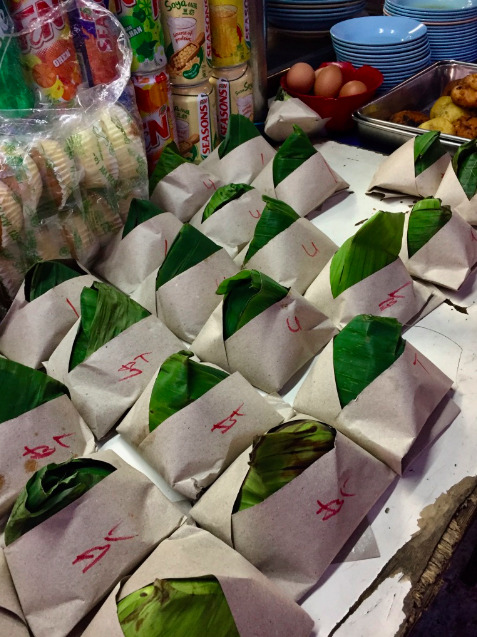
Nasi Lemak
Heading back into town, we meandered through street food stalls along Chulia street, deciding what we wanted to eat for dinner. Woks sizzled in every direction, with sounds of chopping, stirring and pounding filling the air. The smell of unknown spices and savoury dishes followed us as we walked along. Overwhelmed by the choice, we opted to try numerous dishes, including Nasi Lemak, Char Kway Teow, Beef Rendang, Hokkien Mee, Oh Chien (fried oyster) and Rojak (spicy fruit salad). After only a few bites, it was immediately obvious to me why Georgetown had such a widespread reputation for gastronomy and street food. Needless to say, it was a very tasty way to end my first day in Penang.
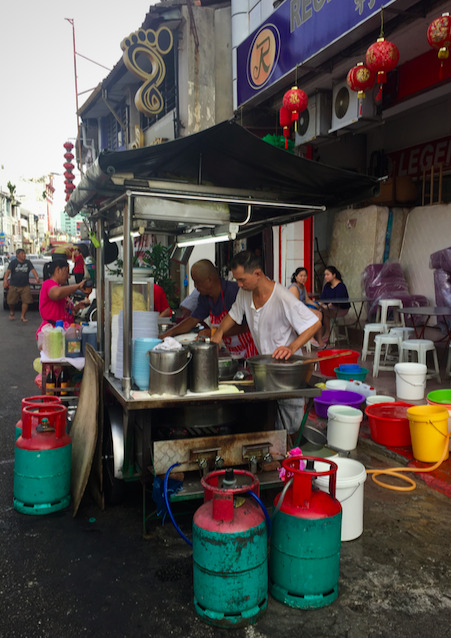
Street Food Stalls in Penang
Day 148 – Penang
In the morning, I met up with Caroline and Tonje for breakfast at Mugshot, a nearby (thankfully air-conditioned!) café on Chulia street, and spent a few hours doing planning and bookings for the rest of my trip in Southeast Asia. Mid day, Tonje and I headed out to wander the streets of Georgetown. It was a hot, humid afternoon – as the island is located in a tropical rainforest climate.
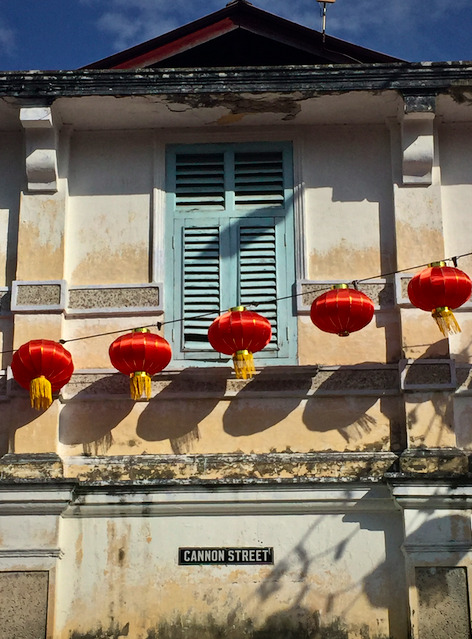
Architecture of Penang
In addition to Georgetown’s stunning architecture, the city is also famous for it’s street art. Dozens of wrought iron caricatures have been put up around Georgetown, depicting local culture, ethnic groups, city history and lifestyle. The street art scene has blossomed throughout the city over the past decade, and it was fun to keep our eyes peeled for street art in the most unexpected places – sometimes down side alleys, or above street level.

We walked through the streets of Little India, checking out sari stores and Hindu Temples, the deities inside adorned with fresh floral garlands, called mala. Along the roadside, massive bunches of bananas hung from the ceilings of shophouses. Tonje and I stopped into Restoran Kapitan for a late lunch, tucking into delicious Indian dishes, including claypot chicken biryani, chapati and squid.

Durian Ice Cream
Continuing onward to Armenian Street, we walked along the narrow street, home to the famous “Children on a Bicycle” mural and other street art. Colonial shophouses along the street were selling everything from fresh fruit to souvenirs and other trinkets. Chinese clan houses, local art galleries and small museums were also scattered along the street. Tonje and decided to try durian, sometimes considered to be the “stinkiest fruit in the world”, which in Malaysia, Singapore and other parts of Asia is a well-loved delicacy. That said, we “cheated” a little in this regard, as instead of trying the fresh fruit, we opted instead to try durian ice-cream!
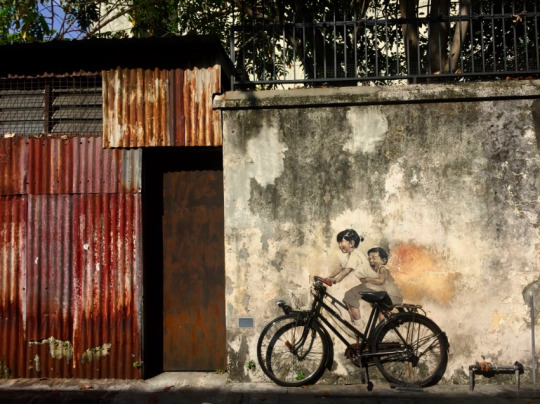
“Children on a Bicycle” Mural
Heading east towards the harbor, we stopped at the Leong San Tong Khoo Kongsi (kongsi translates to “clan house”), built over 600 years ago by the 5 big Chinese clans of the Hokkien community in ancient Penang. A large, ornate building, this kongsi is a place where Chinese families with the same surname gather to pray to their ancestors. The lavish architecture of the Kongsi was truly stunning, embellished with intricately carved wood and stone, and beams painted in brilliant shades of red, gold, blue and green. The Leong San Tong Khoo Kongsi is a complex series of structures, including a temple, and association building, a theatre, and nearby 19th century rowhouses for clan members. Historically, these “clan houses” were almost mini-cities unto themselves, with clan members running their own education, finance and social programs with a self-governing structure.
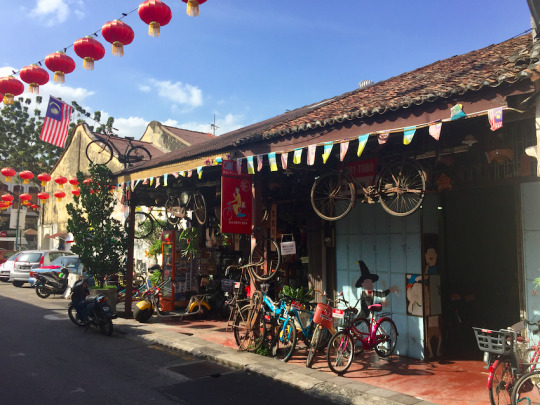
Streets of Penang
Tonje and I stopped for dinner at the Jetty food hall, tucking in for another terrific meal of char koey teow, poh piah (a large variation of a spring roll) and bowls of steaming laksa. As the evening began to fall, we headed down to the clan jetties on the ocean. There are 6 remaining jetties down by the water that were historically home to various Chinese clans. Clusters of century-old homes have been built on stilts above the ocean, with each jetty named after a Chinese clan. Historically, these jetties were used for loading and unloading cargo ships, where there was sometimes a rivalry between different jetty clans for control of the seatrade and economic resources of Penang.
As we walked through the Chew Jetty, along a boardwalk of creeky planks, and wound between the historical stilted homes, it felt like a bit of a time warp. Many Chinese families still live here, and occasionally we could catch a glimpse into the entryways of homes, many with large shrines to worship their ancestors, the air hazy with swirling clouds of incense. While the jetties now have electricity and running water, many of these community members live in homes that have hardly changed in over 100 years. On the main floor of some of these stilted houses, clan members have turned these spaces into small restaurants and shops.
We reached the end of the jetty, and sat down, taking in the twinkling lights of Butterworth across the bay, listening as music from nearby buskers drifted through the air. Fishing boats and long-tailed boats zipped along the water, returning to town as evening began to fall.
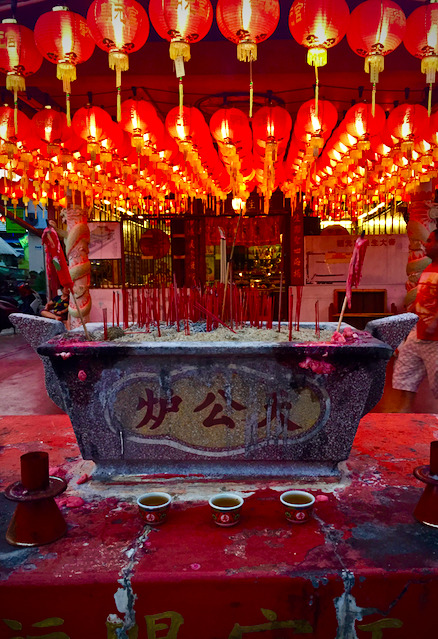
Taoist Temple at Chew Jetty
As the sky darkened, thousands of red lanterns began to shimmer overhead as we headed back into town, passing several Taoist temples at the entrance to Chew Jetty, dedicated to the God of Heaven and the Taoist Sea Deity, Haisen. This day in Penang was near perfect – packed with incredible company, unique architecture, cultural experiences, street art, and (importantly!) fantastic food.
Day 149 – Penang
In the morning, Tonje and I threw on running shoes and workout clothes, grabbed breakfast at Mugshot, and jumped on a bus, taking us up into the lush, dense jungle surrounding Penang Hill. As we passed through a neighbourhood shopping street near the base of Air Itam, our bus inched through heavy pedestrian traffic, with locals bustling between stores and stalls, doing last-minute holiday shopping before the official Chinese New Year’s celebration the following day – February 16, 2018.
We arrived at the base of Penang Hill, and bought our one-way ticket for the funicular, taking us up the slopes to the top of the hill. It was an overcast day, with humidity heavy in the air, and as we ascended, we could see little more than a hazy view over the distant towns of Georgetown and Butterworth. Tonje and I wandered around the top of Penang Hill, where there were numerous lookout points and walkways through the area’s spectacular rainforest. A small mosque, a Hindu temple, and several residential homes and guesthouses are scattered nearby.

Funicular up Penang Hill
Hundreds of birds chattered overhead as we meandered around the hilltop, with dusky-leaf monkeys and macaques scampering through nearby trees. We had decided to hike down from Penang Hill to the Botanical Gardens, which took us deeper into the jungle as we descended on a steep jeep track. Leaving the tourism hub behind, we saw more and more flora and fauna as we went along – including countless monkeys, and the occasional snake slithering out of our way. It took us about an hour and a half to descend the 5 km zig-zagging track – a true knee-knacker! I was thrilled to finally arrived back on flat ground at the botanical gardens. With some difficulty, we figured out the bus route back into town, and arrived back in Georgetown in the late afternoon. I had a shower and a brief nap, before doing some more life-admin and Vietnam visa applications.
At dinner time, all of the street markets and food stalls were closed for Chinese New Years, so Tonje, Egle and I went out for tacos on Love Lane. True to its name, this lane was apparently once the location of many brothels, and was where Peranakan and Chinese businessmen would reportedly keep their mistresses.
Our Mexican dinner, though from a cuisine on the other side of the word, was still delicious – further solidifying my opinion that Penang can do no wrong when it comes to food! As we enjoyed Tiger beers and tacos, a steady procession of buskers, fire performers and street artists moved along the narrow laneway. Live music floated towards us from every direction. I clearly remember how present and alive I felt in that moment, feeling deeply linked to cosmopolitan group of people surrounding me – locals and travellers alike - even though they were strangers to me. In that moment, people from countless backgrounds, countries, ethnicities, and religions were gathered in the same place, all collectively enjoying good food and entertainment.
After almost 6 months of travel at that point, every day I felt more strongly that, as global citizens, we have far more in common than the differences that separate us.
4 notes
·
View notes
Photo




March 29th 1912 saw the estimated death of Explorer Henry 'Birdie' Robertson Bowers.
Bowers was born on 29 July 1883 in Greenock, after his father, a naval captain, died in Rangoon, his mother alone raised him from the age of three with his two older sisters. The family moved to Streatham, London when Henry was around 13, he joined the merchant navy on leaving school and by the time he was 21 had sailed around the world four times on a ship called the cargo ship, The Loch Torridon which became famous as one of the most perfect four-masted barques ever built.
"Birdie" went on to join the Royal Indian Marine Service in 1905 and as sub lieutenant saw service in Ceylon and Burma then commanded a river gunboat on the Irrawaddy. He later served on HMS Fox, preventing gun-running in the Persian Gulf.
In 1908 Bowers joined Captain Robert Falcon Scott's Terra Nova expedition after reading about Scott's earlier expeditions including his journey on The Discovery. Although he was only meant to be a member of the ship's crew Scott was so impressed with Bowers he made him a member of the shore team.
When the party made it to the South Pole it was Bowers who found the flag Amundsen had planted and the tent the Norwegian explorer had used as camp when they beat the British team there 35 days previously, Bowers was the navigator in the team and is said to have taken most of the photos and it was he who fixed the exact location of the geographic South Pole for the Polar party. On there way back from the Pole probably one of the most famous events in exploration occurred when Captain Lawrence Oates, who had been slowing the party down after his foot became frostbitten and gangrenous, spoke the words "I am just going outside, I may be some time". It was a courageous decision by Oates to let the team go on without him and stand a better chance of getting back safely.
By now they had already lost one crew member after a fall in mid February, Captain Scott, Bowers and Dr. Edward "Bill" Wilson ploughed on for three more days covering 20 miles, a blizzard halted them on March 20th, forcing them to stop, the snow storm lasted for days longer than expected and the trio, exhausted, cold and hungry, some 11 miles short of their next food depot could not continue. Scott's last diary entry read....
The following are extracts from Scott's journal...... "March 29th, 1912
Since the 21st we have had a continuous gale from W.S.W. and S.W. We had fuel to make two cups of tea apiece and bare food for two days on the 20th. Every day we have been ready to start for our depot 11 miles away, but outside the door of the tent it remains a scene of whirling drift. I do not think we can hope for any better things now. We shall stick it out to the end, but we are getting weaker, of course, and the end cannot be far. It seems a pity, but I do not think I can write more. R. SCOTT. For God’s sake look after our people."
On or after this the three men perished, they were found by a search party the following spring on 12th November 1912. The search party collapsed the tent over them, thus burying them where they lay under a snow cairn topped by a cross made from a pair of skis, later replaced by a simple wooden cross. Among the items they found and took back with them were the Kodak film rolls with the photographs at the South Pole and geological specimens. The Bowers Hills in Antarctica, later renamed the Bowers Mountains, were named in his honour.
Pics are of Bowers and the others who lost their lives, the last pic is The Bowers family memorial in Greenock.
The memorial on the left commemorates the Bowers family. It is location № 22 on the Blue Walk in the "Greenock Cemetery Walks" booklet. Amongst those named on the inscription is the following: "Henry Robertson Bowers, Lieutenant Royal Indian Marine, born 29th July 1883, died about the 27th March 1912, on the return journey from the South Pole with Captain Scott." (He most probably died on the 29th of March, the date of Scott's last diary entry.) Henry Robertson Bowers was the son of Alexander Bowers (of the British India Steam Navigation Company, Burma – for more on Alexander, see the booklet cited above). Henry was better known by his nickname, Birdie Bowers. The house in which he was born is № 57 on Greenock Esplanade (at NS26117789), and is marked with a plaque (this is apparently the correct house number, although the booklet cited in the end-note says № 58): see NS2677 : Birthplace of Birdie Bowers and NS2677 : Plaque at birthplace of Birdie Bowers. Of the five men making the return journey from the South Pole on Scott's ill-fated Terra Nova Expedition, Edgar Evans died (apparently from the after-effects of a severe concussion), and Captain Lawrence "Titus" Oates sacrificed himself to improve the others' chances of survival. Henry "Birdie" Bowers and Dr Edward Wilson were with Captain Scott when all three succumbed to the hardships of the journey. Their bodies remain there. You can find more pics of Bowers here http://www.rwsabc.co.uk/wp-content/uploads/2012/10/6003-Bowers-PS-LOWRES.pdf
8 notes
·
View notes
Text

Send from Sansgreet Android App. Sanskrit greetings app from team @livesanskrit .
It's the first Android app for sending @sanskrit greetings. Download app from https://livesanskrit.com/sansgreet
V. O. Chidambaram Pillai.
Valliyappan Olaganathan Chidambaram Pillai (5 September 1872 - 18 November 1936) was born in Royal family of Tuticorin. He is popularly known by his initials, V.O.C. and also known as Kappalottiya Tamizhan or "First Indian Helmsman", was an Indian freedom fighter and former leader of the Indian National Congress. Founder of Swadeshi Steam Navigation Company in 1906 to compete against the monopoly of the British India Steam Navigation Company (BISNC). He launched the first indigenous Indian shipping service between Tuticorin (India) and Colombo (Sri Lanka) with the Swadeshi Steam Navigation Company (SSNC), competing against British ships. Tuticorin Port Trust, one of India's thirteen major ports, is named after him. At one time a member of the Indian National Congress, he was later charged with sedition by the British government and sentenced to life imprisonment, and his barrister license was revoked.
#sansgreet #sanskritgreetings #greetingsinsanskrit #sanskritquotes #sanskritthoughts #emergingsanskrit #sanskrittrends #trendsinsanskrit #livesanskrit #sanskritlanguage #sanskritlove #sanskritdailyquotes #sanskritdailythoughts #sanskrit #resanskrit #celebratingsanskrit #vochidambarampillai #chidambarampillai #tuticorin #kapalottiyatamilan #tamilan #steamnavigation #tuticorinport #tuticorinporttrust #ottapidaram #indiannationalcongress #inc #thoothukudi #tamilanadu #tamilnadutourism
#greetingsinsanskrit#sanskritgreetings#sanskrittrends#trendsinsanskrit#livesanskrit#sanskrit#celebratingsanskrit#kerala#indianarmy
0 notes
Text
King Pedro V of Portugal

Approaching the life and history of King Pedro V in its essence, is justified given the importance that this monarch had in such a short time of life and reign, for Portugal, as well as the important role he played in development, whether technological, or social at that time in the country in various sectors. Pedro de Alcântara Maria Fernando Miguel Rafael Gonzaga Xavier João António Leopoldo Victor Francisco de Assis Júlio Amélio de Bragança, Bourbon and Saxe Coburgo Gotha was born in Lisbon at Paço Real das Necessidades

on September 16th, 1837 at 11.30 pm, where he also died on November 11th 1861, at 7 pm being baptized in the chapel of the same Paço on October 1st the following by the Cardinal Patriarch of Lisbon D. Fr. Patrício da Silva (1756 - 1840),

chaplain of Queen D. Maria II. Known as, The Hopeful, The Well-Beloved or The Very Beloved, firstborn son of Queen D. Maria II (1819 - 1853) of sovereign Portugal, and of her husband, the king consort D. Fernando II (1816 - 1885).
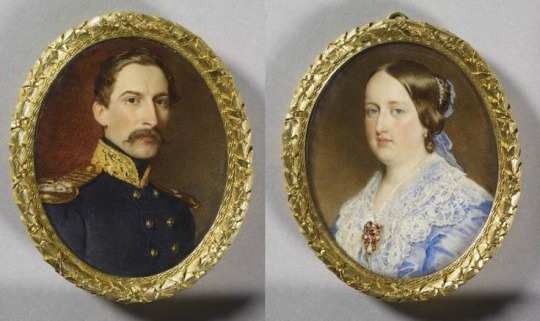
On the day of the birth of Infante D. Pedro, there were parties all over Lisbon and in the gardens on the outskirts around the city. All of this because there was fear of the danger of no succession on the part of Queen D. Maria II due to her difficult pregnancy. Pedro was sworn and recognized as a royal prince and heir to the Portuguese crown by the Cortes Gerais on January 26th, 1838, aged just over four months. Considered a gifted child, he was educated exquisitely, as were his brothers, D. Luiz I of Portugal (1838 - 1889), D. João de Bragança, Duke of Beja (1842 - 1861), D. Maria Ana de Bragança, princess of Saxony (1843 - 1884), D. Antónia de Bragança (1845 -1913), D. Fernando Maria Luiz de Bragança (1846 - 1861) and D. Augusto de Bragança, Duke of Coimbra (1847-1889), by the best teachers from Lisbon, and mainly by his mother, who always had a very good reputation as an excellent educator. From an early age he revealed the brilliant qualities that characterized him, his remarkable intelligence, his tendency to persevere in study, the noblest and highest qualities of spirit and heart. He had a remarkable moral and intellectual preparation.

He studied natural sciences, philosophy, had a good command of Greek and Latin and even studied English.

Before completing two years of age, he already mastered the German and French languages, at the age of twelve he spoke Latin and Greek, studied great works of philosophy and wrote articles for newspapers. His spirit was influenced by the coexistence he had with Alexandre Herculano (1810 - 1877),

who was his educator. He also received numerous advice on governance and sense of state by Mário Jorge de Castro Botelho, with whom he exchanged correspondence, among other figures of the time, during the period of his reign.
The young monarch's apprenticeship was also made with the various trips he will undertake in Portugal and abroad, visiting several European courts, observing schools and teaching methods, asylums, hospitals, factories and museums. When his mother, Queen D. Maria II, died on November 15th, 1853, Pedro was sixteen years old, whom he succeeded on the throne. D. Pedro V
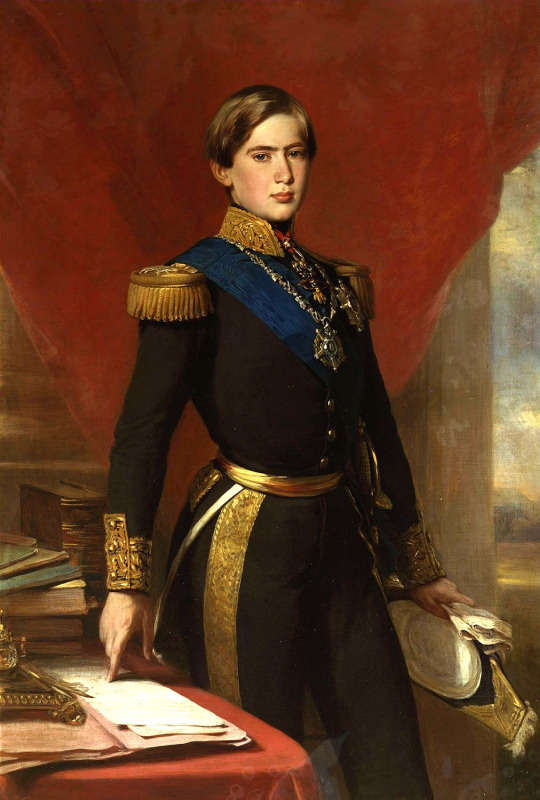
is the 30th king of Portugal
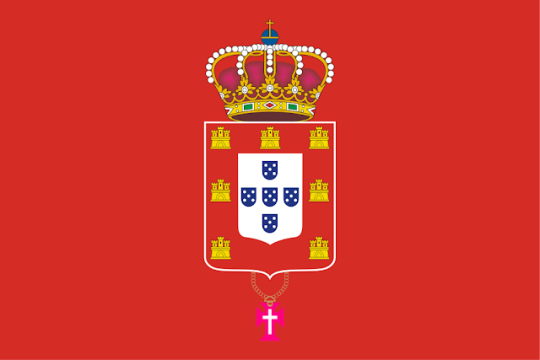
and although very young at the time of his accession to the Portuguese throne, he was considered by many to be an exemplary monarch, who reconciled the people with the royal house, after his mother's reign was fruit of a civil war. When D. Pedro V began his reign, he still governed the ministry of Saldanha, out of the Regeneration of 1851. The Duke of Saldanha

that D. Pedro deplored and despised, considered a condottieri, already somewhat outdated for the capitalist country (capitalist at the time). it costs, it should be mentioned, of foreign capital, mainly French and English) is no longer in conspiracies, either stability. António Maria de Fontes Pereira de Melo (1819 - 1887)

stands out in this ministry, holder of the Public Works portfolio, famous for the impulse he gave to the railways in Portugal, among other works in Portugal. D. Fernando II, his father, played a fundamental role in the beginning of his reign, having exercised the government of the nation as regent of the kingdom, guiding the young king with regard to the great public works carried out. D. Pedro V is often described as a monarch with very present social values, partly due to his education, which included work with the communities and a vast knowledge of the European continent. To solemnly celebrate the beginning of the reign of D. Pedro V in 1853, the Asylum of D. Pedro V

was founded, in Campo Grande in Lisbon, being this monarch from the outset his protector. Its magnificent building still exists,
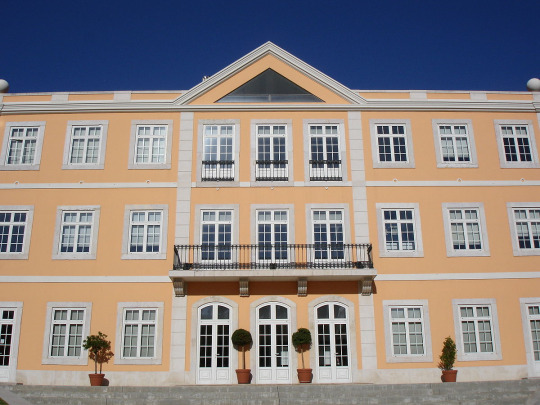
and would be inaugurated on October 18th, 1857, with its Statutes approved on November 2nd, 1860. In the beginning it only received children up to the age of seven, with the death of this monarch, the statutes were refurbished in 1867, becoming the Asylum of Disadvantaged Childhood of Campo Grande, and asylum seekers can remain until 18 years old. The Lisbon trade contributed to the maintenance of this Asylum. At the age of eighteen, the majority of the kings of Portugal, D. Pedro V was even smaller, and that same day the Council of State was called, which decided to entrust the regency of the kingdom, during the young monarch's minority, to his father. , the king consort D. Fernando II, since there is no provision regarding this issue in the Constitutional Charter, a decision which was later confirmed by the Cortes Gerais, and which he took an oath at the session of December 19th, 1853. It was during his reign Regeneration began and Portugal entered modernity, so to speak. D. Pedro V and his brother D. Luiz I of Portugal, who later succeeded him to the throne, undertook an educational and recreational trip through Europe. In May 28h 1854 they left the Lisbon bar on board the steam ship Mindelo,
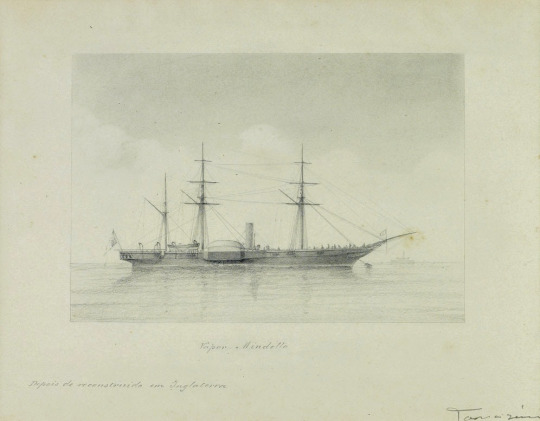
going directly to London, then passing to Belgium, Holland, Prussia, Austria, France and Saxe-Coburg-Gotha, returning to London, where they returned to Lisbon. In all these courts, the royal rulers provided the greatest proof of consideration and sympathy. As a proof of this, during that trip to London, on June 10th, 1854, D. Pedro V and his brother D. Luiz I, accompanied, on the right in the place of honor, Queen Victoria of the United Kingdom in the sumptuous reopening of the Palace of Cristal, reinstalled on Sydenham Hill.


Therefore, the Portuguese king and prince were received in the privacy of the British Royal Family
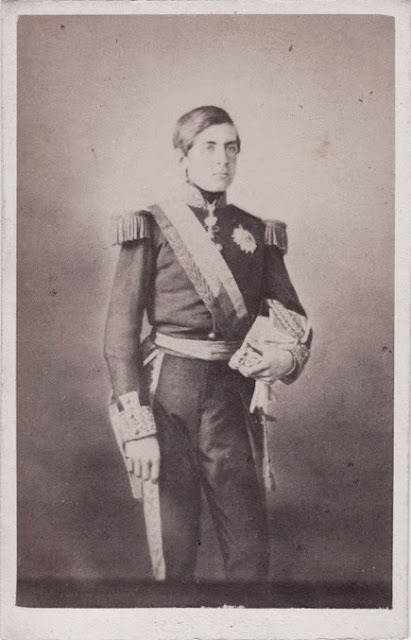
and this friendship would last, even beyond their stay in the Lands of Her Majesty,

as they would continue to correspond with assiduity becoming Queen Victoria and the prince Albert,

advisers and even confidants of the young Portuguese monarch.
In the following year, 1855, they undertook a new journey, visiting again some of the lands already mentioned, as well as Italy, Switzerland, etc. All visiting places served them as learning from other realities, especially the most innovative and those that were urgent to implement in Portugal.
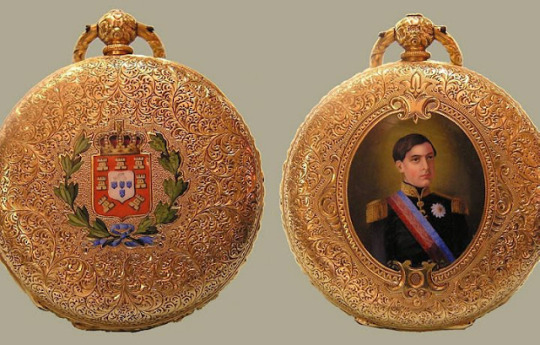
On the return of that trip, completing D. Pedro V, eighteen years old on September 16th, 1855, that day his majority was declared, and he swore an oath in a solemn session of the General Courts before the Peers of the Kingdom and the Deputies of the Nation: Pela Graça of God, King of Portugal and the Algarves, d'Aquém and d'Além-Mar in Africa, Lord of Guinea and Conquest, Navigation and Commerce of Ethiopia, Arabia, Persia and India, etc. On that day he receives from his father D. Fernando II, king regent, the duties of the throne of Portugal that had belonged to his mother the queen D. Maria II. Large and enthusiastic parties were held in Lisbon to solemnize the new king who was going to assume the heavy and thorny office of the kingdom's governance. This new king was a young man of 18 years, serious and sensible, illustrated and serious as a man twice his chronological age. Always concerned with education and training, on December 9th, 1855, the Royal School of Mafra opens in the Mafra Palace itself, this institution being financed by the monarch himself.


That same year, D. Pedro V chaired the inauguration of the first electric telegraph in Portugal

and, on the following year, on October 28th, 1856, he inaugurated the first section of railroad in Portugal between Lisbon and Carregado, following a process initiated by his mother, Queen D. Maria II in 1853. Regarding the railway D. Pedro V followed with interest and enthusiasm the works and line tests that took place days before of the inauguration.
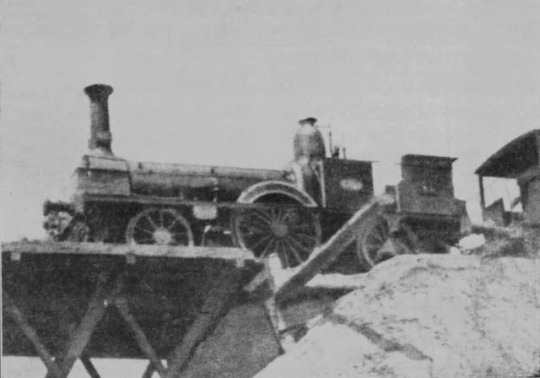
Having created the first railway company in Portugal, the Companhia Peninsular dos Caminhos de Ferro de Portugal, in charge of building the line from East Lisbon to Spain. On that day after the blessing of the locomotives, sixteen carriages left in a festive atmosphere for Carregado, towed by two locomotives named "Santarém" and "Coimbra". The young king D. Pedro V and the guests of the company's management followed in the main coach, surrounded by his technicians, all talking about this novelty and innovation for Portugal.

Although this inaugural trip was troubled, it would be the beginning of a great and important development for the country. As a curiosity, D. Pedro V and his brothers, namely D. Luiz I, had early coexistence with the new technologies of the time, which it would come to some extent to influence later on the railway. An example of this was the miniature toy locomotive, real steam, which the King of France Louis Philippe I (1773 - 1850), asked mechanical engineer Eugène Philippe, to build the copy of a toy steam locomotive (called steam live or live steam) ), his belonging, called La Lilliputienne, to offer the Portuguese royal family.
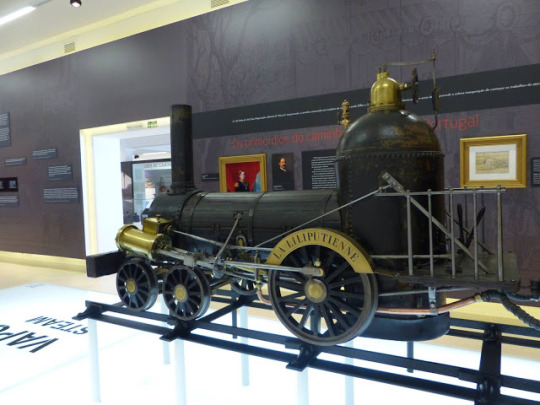
This was also how cultural training began through the contacts that the two monarchs had as children and young people, with that toy from the Pal��cio das Necessidades. It was the first steam locomotive to exist in Portugal. Around 1880, this toy was made available for the Passeio Público de Lisboa. The locomotive, its tendency and the network of rails became an installation of "steam live" (live steam) at the service of the children of the Lisbon bourgeoisie and source of animation in that public place. This locomotive is currently preserved at the National Railway Museum (MNF) in Entroncamento. It is also during his reign that the first regular ship voyages between Portugal and Angola begin. Popular education has always been his main concern. He founded the Escola Real das Necessidades on September 16th, 1856, in a building near Paço Real,

and in Paço de Mafra he had installed a school in the previous year. This king had the pleasure of distributing books in prizes to children, his secretary Joaquim Pinheiro Chagas (1809 - 1859), father of the late statesman and distinguished writer Manuel Joaquim Pinheiro Chagas (1842 - 1895), was responsible for translating and adapting Portuguese schools to Dr. Brewer's Clef de la Science. This translation was interrupted with the death of the translator, which happened on December 3rd, 1859. Great misfortunes began to mark his reign. In 1856 a morbus cholera epidemic

developed in Lisbon, and in many other parts of the country, making considerable numbers of victims, in the following year, 1857, another scourge, which became even more devastating, yellow fever, came to plague the capital. It was two years of sad memory, which mourned thousands of families in Portugal, many of them being completely extinguished, leaving many children in orphanage. The city of Lisbon, especially in 1857, had a very sad aspect, especially in the lower part of the city, numerous establishments were closed; some, because their owners died, others because they left Lisbon, fleeing the terrible contagion of successive epidemics.

The general terror was indescribable; by order of the government, newspapers were prohibited from giving long news about the deaths, as well as the number and names of the victims, who even occupied many columns daily. Burials began to take place at night, in a simple and discreet manner, with funeral pomp not permitted, only a dry one leading the dead man and the priest to accompany him. The hospitals were not enough to house the huge number of patients, and some provisionals were organized in certain parts of the city. Numerous penance processions roamed the capital's streets, and prayers were chanted in churches every day. Theaters and other public entertainment closed. The consternation was general, the streets were deserted, the terror was plastered on all faces.
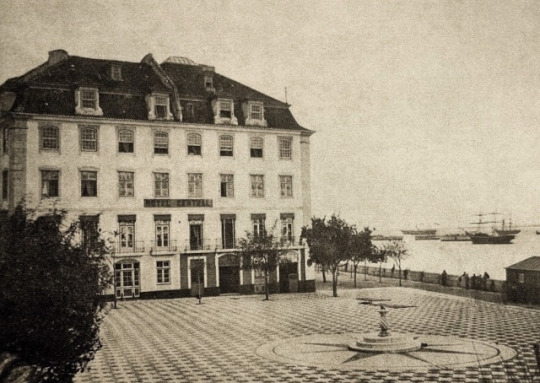
Many inhabitants of Lisbon left the city, going to live in the surroundings like Campolide and Benfica, as well as to other distant lands. Senior officials and other public servants, capitalists, businessmen and the patriarch himself, leave the capital. In the midst of this dreadful and distressing situation stood out the figure of the young monarch D. Pedro V who, despite the advice of those around him, did not want to leave Lisbon, and which other apostle of good and resignation, went to the hospitals, sitting down near the sickbed, to whom he addressed words of hope and comfort.

When the helpers who accompanied him on these pious visits asked him not to be so exposed to the terrible contagion, he replied dryly that if they were afraid they would leave him, that he could be alone. This act of selflessness and charity made the greatest impression on everyone and even the admiration of foreigners. A boy who was only 20 years old, setting such a great example of love for those who suffered, trying to soften their suffering, at least cheering them up with his presence. As ruler, King D. Pedro V was a moderate-minded liberal, having distinguished himself for his superior awareness of the country's problems. He studied the proposed government deliberations in detail. He gained enormous popularity, for the great public works carried out and for being an indefatigable and meticulous sovereign monarch who dedicated himself diligently to the government of the country, studying in detail the proposed government deliberations and their impacts, so that no one could accuse him of signing something of who had no knowledge. This type of stance towards the country's governance revealed that the monarch refused to be a mere "stamp king".

D. Pedro V ruled, in fact, in an individualized way, which earned him great popularity. An example of the attention he paid to the opinions and complaints of his subjects was the unprecedented resolution, having the famous green box, whose key he kept, be placed at the door of the Ajuda Palace,

so that his people could speak to him frankly, depositing their your expectations and complaints! It should be noted that there are differences as to where this green box was located, whether in the Ajuda palace or the Necessidades palace, however this measure taken by D. Pedro V caused some challenges in parliament.
King Pedro V became very popular, the people adored him, and called him the "holy king". Luck protected him, because by exposing himself so courageously to the danger of dark contagion, he had no sign of illness in those months of August, September, October and November 1857, when the effects of the epidemic were most pronounced. Little by little, the cases, which until then were numerous every day, became rarer, and when the end of December came, the yellow fever was completely extinguished, leaving the cries, the lamentations of the people who had lost loved ones and orphaned children, who they saw themselves left to the deepest sadness and longing. On the initiative of King D. Pedro V, the Asylo da Ajuda was created in 1857. It was intended to collect orphans of both sexes, children of the victims of cholera and yellow fever, staying in a building on the Calçada da Tapada in Ajuda in Lisbon. The age of admission was between 7 and 18 years old, and the orphans received, in addition to primary education, differentiated training according to sex. The girls were prepared for future servants to serve, and the boys learned a mechanical job. In the year 1858, it brought to Portugal more peaceful days and more happiness. To alleviate the anxieties of the previous two years, it was the marriage of the young monarch, who had become the people's idol. This news was received with the greatest enthusiasm, the wife chosen being the princess of Hohenzollern-Sigmaringen, D. Estefânia Josefina Frederica Guilhermina Antónia (1837 - 1859),
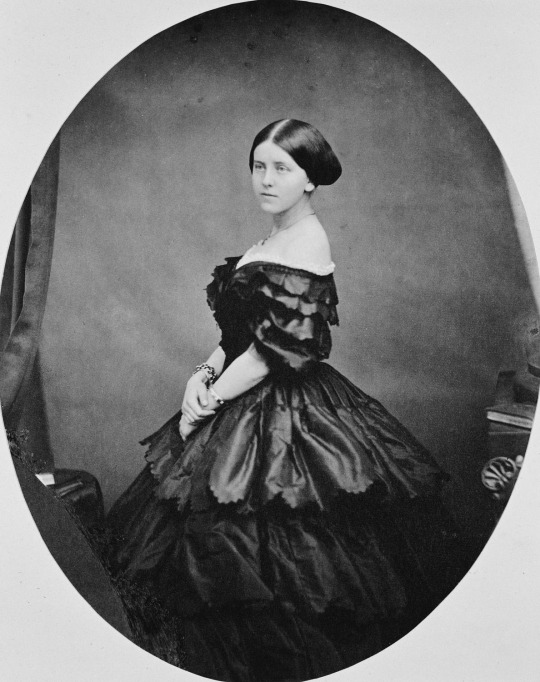
second daughter of the sovereign prince of Hohenzollern-Sigmaringen, Carlos António Joaquim, and his wife D. Josefina Frederica. Previously, there were some proposals for possible brides for D. Pedro. There was talk, even without the existence of any document that has attested any matrimonial interest, of a possible marriage to the eldest daughter of Queen Victoria of the United Kingdom, Princess Vicky, however the young D. Pedro never ignored that the future bride could not be a princess from a Protestant family, seeing in addition to Vicky always a kind of older brother, whose company allowed for more cheerful conversation whenever he spent seasons in London on his travels. Another hypothetical case was that of marriage to the Belgian princess Carlota, discussed between her father and Queen Victoria. But Estefânia de Hohenzollern-Sigmaringen would be the one chosen for D. Pedro by indication of the Prince Consort Albert de Inglaterra. D. Estefânia brought together all the characteristics that were combined with those of D. Pedro and vice versa. The marriage was made by proxy on April 29th, 1858, in the Church of Santa Hedwig in Berlin. The Count of Lavradio was responsible for the marriage contract. On May 4th, 1858, D. Estefânia went to Bruxellas, and on the 5th she left for Ostend, where the steamboat Mindelo she was supposed to embark on, which was accompanied by the steam corvette Bartolomeu Dias and two yachts English. The squadron, as soon as the queen was on board, lifted iron, and went to Dover, where she arrived on the 6th, with Queen D. Estefânia remaining in London for four days with Queen Victoria. On May 11th, she embarked in Plymouth on the steam corvette Bartolomeu Dias, and escorted by a ship and three English frigates, she went to Lisbon, where she arrived on May 17th. At the break of dawn on May 17th, 1858, D. Estefânia, was greeted on arrival in Lisbon by volleys from the castle of S. Jorge and other forts, as well as from national and foreign warships that were anchored in the Tagus.
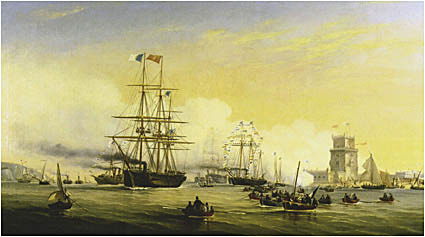
The cheers and acclaim, which the people released during the transit of Terreiro do Paço, where the young queen disembarked, reached delirium according to the reports of the time. The Terreiro do Paço was all decked out, exhibiting a pavilion across the width of the Cais das Colunas for its reception.

Five days of court gala and public holidays were decreed in the state offices. Two pavilions were set up in Terreiro do Paço,

whose mouths were elegant arches, as well as in Pelourinho, Cais do Sodré, and elsewhere in the city of Lisbon. In Rossio, where today is the memory of D. Pedro IV, in which there was only one pedestal at the time, a column was improvised, on which the statue of Hymeneu (Greek god of marriage) was seen.
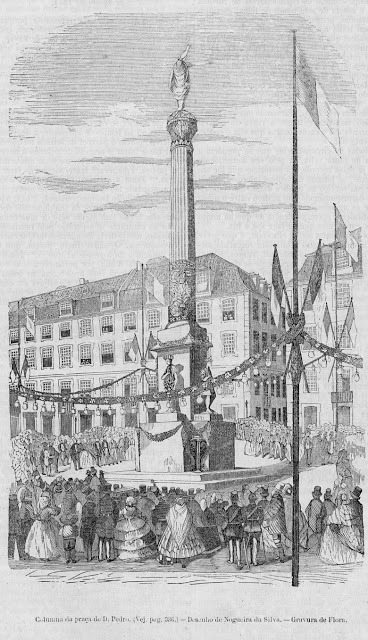
The wedding ceremony itself took place in Lisbon, the day after her arrival, on May 18th, 1858, in the church of São Domingos,
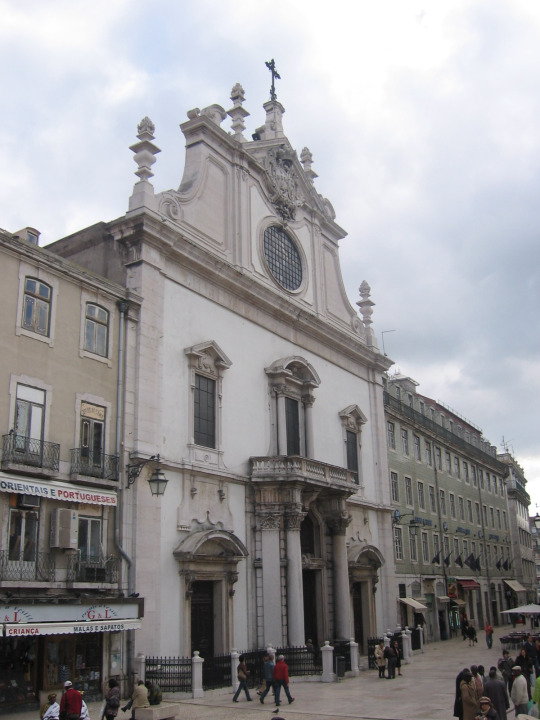
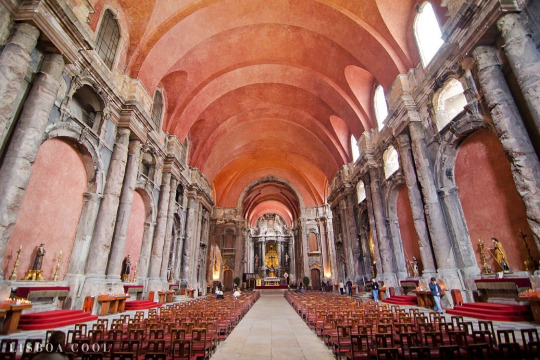
celebrated by the cardinal Patriarch of Lisbon D. Guilherme I (1793 - 1857). A beautiful spring day, which also seemed to come to greet the royal fiancés, joining the enthusiasm that was noticed everywhere, the joy and satisfaction that reflected in all faces.
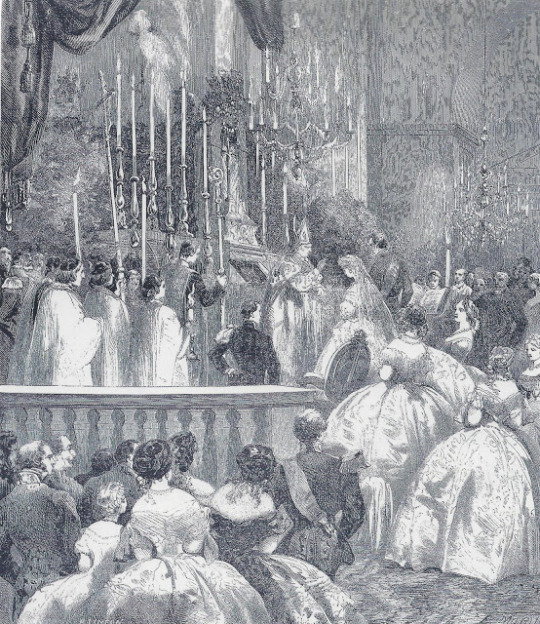
When D. Estefânia left the church of São Domingos, by the hand of her husband D. Pedro V, king of Portugal, the voices of the Portuguese dictated his destiny: “the queen is going dead! Go in chapel!” Three drops of blood had stained her spotless white dress. The young German princess did not have the strength to bear the weight of the magnificent diadem that D. Pedro had offered her as proof of his love. In the following days, splendid illuminations, parades, gala recitals in the theater of D. Maria II and diplomatic dinners were shown. Queen D. Estefânia soon also gained the greatest sympathies, her character, which is rarely found in these monarchical unions, was in perfect harmony with her husband's character.

The royal spouses loved each other extremely. They spent the honeymoon in Sintra during the summer of that year 1858, and often found themselves strolling alone arm in arm on the loneliest paths in the mountains, which were often repeated in Lisbon, through the Alcântara area ( at the time around Lisbon), and which inspired the people with the deepest sympathy, because they set an infrequent example of love in marriage and love on the throne, and the example of the highest domestic virtues with the purity of their living, with the affection that united them, which manifested itself at every moment.
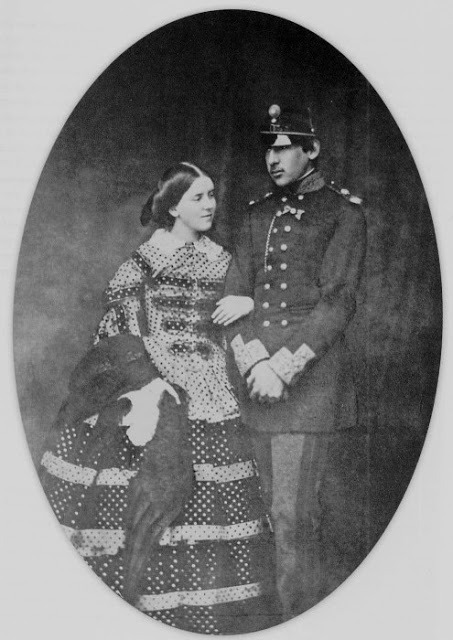
D. Pedro V, to impress his consort, spared no expense in the decoration of D. Estefânia's rooms, in the Palácio das Necessidades.
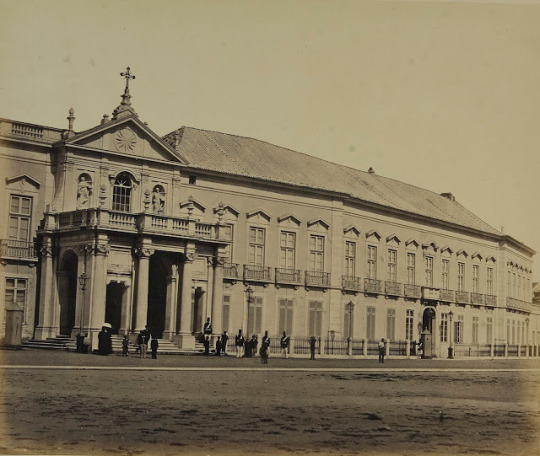
Ordering furniture, lamps, carpets and fabrics for upholstery and curtains from Paris, all of the most elegant and quality that existed.
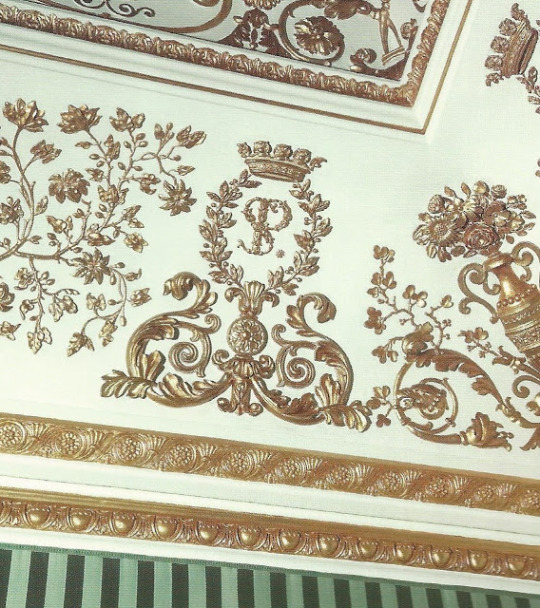

The south wing of the Mafra Palace, which had already undergone alterations in 1855, also suffered some alterations again at this time, in order to receive the monarchs, namely in the hunting seasons of which D. Pedro V was an adept, with a room exclusively dedicated to this monarch.
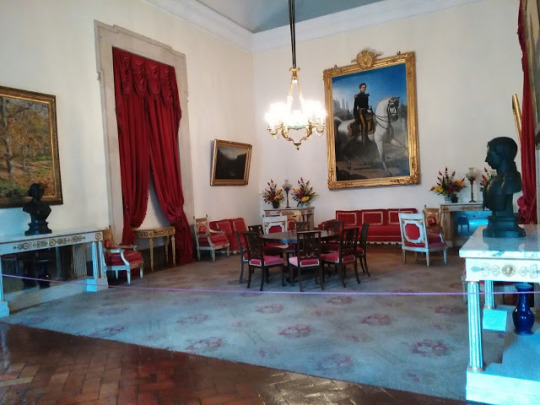
It was in that year of 1858 that D. Pedro V had the noble idea of founding in Lisbon the high literary studies that did not exist in Portugal and which after his death had little development. He gave part of his civil list to buy inscriptions, which constituted the endowment of a new establishment of higher education, the Higher Course of Letters,
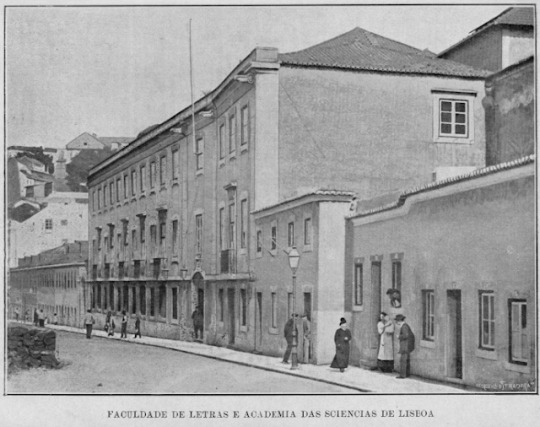
where the chairs of history, ancient literature, modern literature, philosophy of history and philosophy were created transcendent, chairs that were conducted by Lopes de Mendonça, Rebelo da Silva, Jaime Moniz, etc. That was the foundation, for which D. Pedro V was very sympathetic, and often the monarchist scholar who loved letters and science, would listen to the teachers' lessons, preferably listening to the inspired and eloquent word of the great Rebelo da Silva. It was, together with his wife, Princess Estefânia de Hohenzollern-Sigmaringen, that Pedro founded public hospitals and charities. In fact, fulfilling the wishes expressed by her after a visit to the Hospital de São José, where the queen was impressed by the promiscuity with which children and adults were treated in the same ward. Queen D. Estefânia offered her wedding dowry so that a children's ward could be created there, and she also expressed the desire to build a hospital exclusively for poor and sick children.

But the trials that the unfortunate king had to go through in his short reign of just six years were not yet complete. Two facts followed one another that deeply hurt him, one as a king, and the other as a dedicated and loving husband. Being a staunch supporter of the abolition of slavery, an episode dates from his reign that attests to the monarch's conviction in this matter and that simultaneously demonstrates Portugal's fragility before the great European powers, when in 1859 the slave ship was seized in 1859 Frenchman Charles et Georges,

and his commander was arrested. The French government not only demanded the release of the ship, but for that purpose sent a squadron to the waters of the Tagus to take that ship and face the Portuguese flag, as well as demanding a large indemnity to the Portuguese government. Still the disputes with England for the dominions in Africa and with the Holy See. As husband, he saw that same year, on July 17th, his wife died at the age of twenty-two, victim of diphtheria angina. The disease would have been contracted during a visit to Vendas Novas. D. Estefânia's last words would have been: "Comfort my Pedro!".
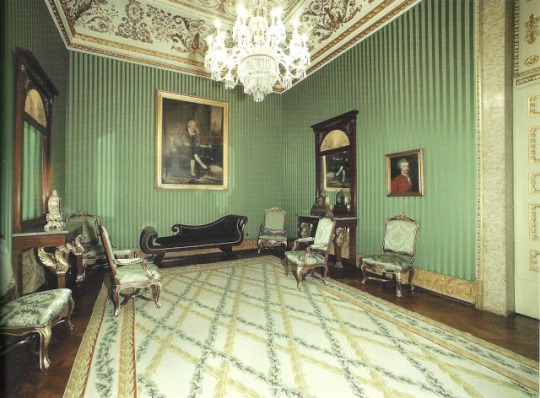
The death of D. Estefânia left D. Pedro inconsolable with such a great loss. The heartfelt letter that the monarch wrote to the Duke of Terceira, then president of the council of ministers, was a memorable letter, passed on from such profound melancholy and written with eloquent simplicity. "Me and my people have been companions of misfortune, the conscience tells me that I have not abandoned them." So it was, the people also did not abandon him in this supreme anguish; "It was a heart for the earth and a spirit for heaven," added D. Pedro V, referring to the wife he had lost. The death of D. Estefânia greatly dismayed not only the king, but also the people in general, who had developed great affection and affection for her.
The funeral procession of D. Estefânia was conducted under great consternation to the Monastery of São Vicente de Fora.
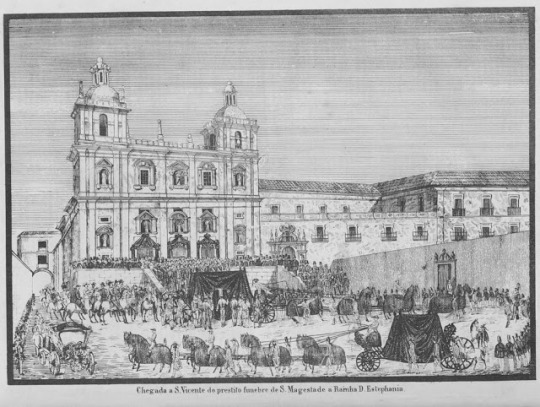
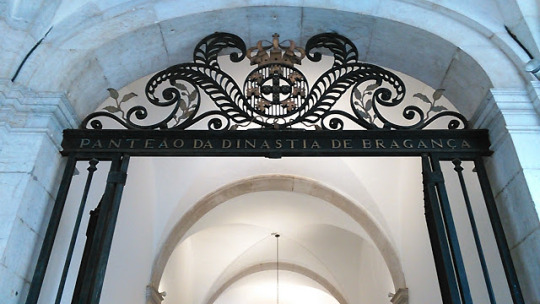

Due to their early death, the couple did not have any children. However, D. Pedro V's speeches were always full of high ideas, and he wrote in a nervous and very concise style, which sometimes went into obscurity. Critics accused this enigmatic style, and said that el-rei, who knew German culture well, was sympathetic to the German philosophy influenced by his father D. Fernando. The truth is that he sought only to embody in the smallest number of words possible the greatest possible number of ideas. It was not limited to speeches or intellectual activity. In the Revista Contemporânea de Portugal e Brazil

he wrote with the pseudonym Azonbolos, a study about the taking of Gaeta by the Piedmontese troops. Many fragments of philosophical and moral studies were mixed with his papers after his death. D. Pedro V often vented his most intimate and distressing pains with Joaquim Pinheiro Chagas (1808 - 1859), his secretary. He had been his vigil companion in the hours following the death of D. Estefânia, in which the sad king, after a few minutes of restless sleep, woke up in great fits of tears, and embraced his secretary, who, having also since the woman he loved dearly died, he knew how to understand and how to console that sincere and profound pain.

The death of this faithful and devoted friend was yet another profound and unexpected blow for the king, because Joaquim Pinheiro Chagas died in the force of life when he was only fifty years old. In 1860 the disastrous result of the realization of an idea he loved, the establishment of a recruit deposit in Mafra, also made a deep and painful impression on him. The poor conditions in which this deposit was organized produced the disaster, but D. Pedro V felt it deeply, not only because he could partly be responsible for the death of so many recruits who expired there in that slaughterhouse, but also for see one of the projects shattered in smoke, from which he thought the most profitable fruits would result. It is also after the death of his wife, D. Estefânia, that King D. Pedro V founded in Lisbon, the Hospital da Bemposta in 1860, in the old gardens of the Bemposta royal farm, a hospital destined for poor and sick children as a wish of the your wife. The works of this hospital begin in the reign of D. Pedro V but will only be inaugurated later, on July 17th, 1877, after his death, by his brother D. Luiz I already as king of Portugal and designated as Hospital D. Estefânia.

The monarch was not given to grand state ceremonies, as well as invitations to other distinguished foreign statesmen, he felt that Lisbon was not in a position to receive them like the palaces themselves. It concludes that foreigners could not assess our degree of poverty. 19th century Lisbon does not have hostels for any more demanding visitor, not even the existing palaces.
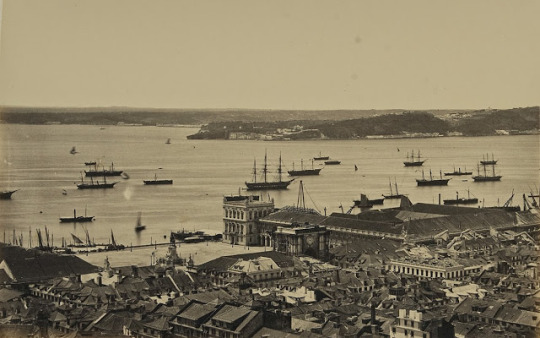
D. Pedro V was Duke of Saxe-Coburgo-Gotha,

Grand Master of the military orders of Christ,

S. Bento de Avis

and S. Tiago da Espada;

grand cross of those of the Tower and Sword
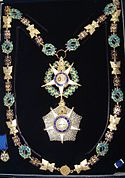
and of Our Lady of the Conception of Vila Viçosa;
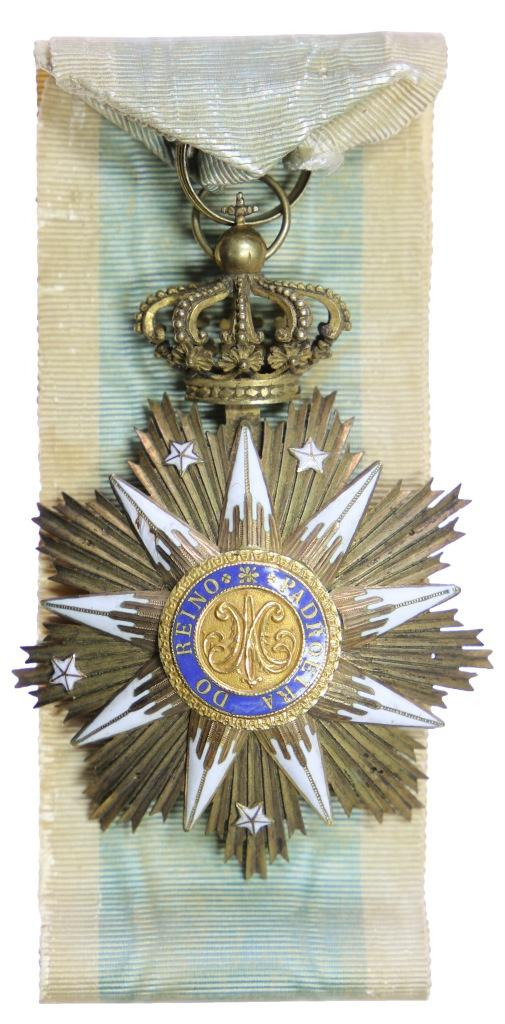
knight of the Order of the Golden Fleece, of Spain,
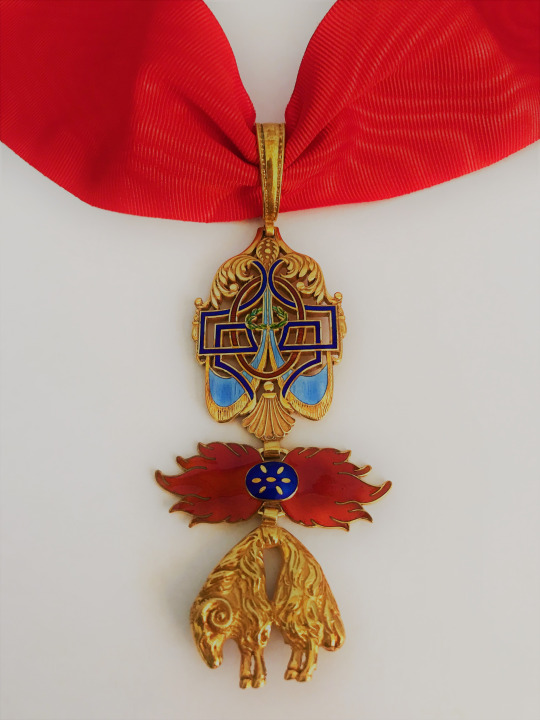
and of the Supreme order of the Most Holy Annunciation, of Sardinia;
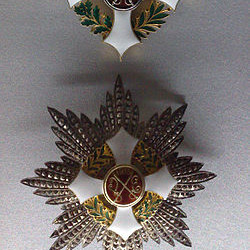
first-class knight, in brilliants, of Hohenzollern;

grand cross of orders from Cruzeiro do Sul, Brazil;

from St. Stephen of Hungary, from Austria;
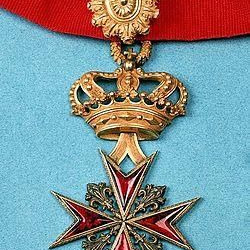
the Black Eagle, from Royal Saxony; the Dutch Lion, from the Netherlands;

the White Falcon, by Saxe-Weimar;
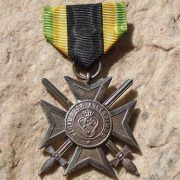
the Legion of Honor, France;

by S. Fernando and Mérito, by Duas Sicílias.

D. Pedro V respected the important politicians of his time, and was a great respecter of Alexandre Herculano, whom he visited frequently, entertaining with the notable historian scientific discussions; he spent long hours, when he was in Mafra, consulting chronicles and other old books from that valuable library. He dedicated himself to music, playing the piano excellently, he was notable in fencing, a good marksman, and he drew with taste and ease, having the special gift of characterizing a person at first suddenly with three or four strokes, leaving many of his caricatures notable for grace and for the speed and firmness of the stroke. Hunting was one of his favorite pleasures. It was he who completely abolished the hand kiss, a palatial etiquette that was one of the remains bequeathed by absolute sovereignty, and refused to confirm the death penalty. He did not want to see the citizens, among whom he was the first, bend his knee in his presence, because that bow belongs only to Divinity as it belongs to him alone to take the life of men. He understood that the hand-kissing ceremony was an act of servility unworthy of every self-respecting man, as he understood that human justice is solely responsible for correcting delinquents, by seclusion and work, to restore them to society, purified and provided. King Pedro V ends all this, saying: "kneel down… .a man only kneels before God, who is above him, all other men are brothers", "no one has to kneel before anyone" and "kiss the hand… we can be kiss the hand of a father to a mother… now I am not a father of the Portuguese… I am their brother" "so no one else will kiss my hand" "a Portuguese who cares of another Portuguese shakes his hand and it is with a loyal handshake that expresses their friendship ". King D. Pedro V undertook many trips from north to south of Portugal, to the city of Porto where he made several visits and inaugurations, as in 1860 in the company of his brother D. Luiz I, the inauguration of the Porto Agricultural Exhibition, visits the chain da Relação do Porto, where writer and novelist Camilo Castelo Branco (1825 - 1890) and Ana Plácido (1831 - 1895) were imprisoned, as well as an important visit that same year to Setúbal.
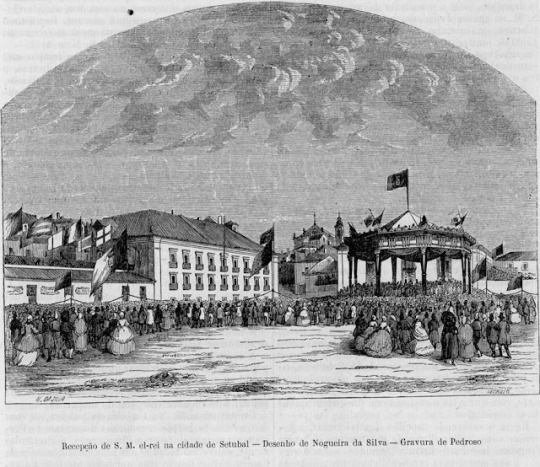
In 1861 he returned to Porto and Braga where he made state visits and some important inaugurations as a symbolic inauguration on September 3rd of that year, of what would later become the Crystal Portuense Palace.

With regard to advances in the study of sciences, in the year 1861, King D. Pedro V had the initiative to endow Lisbon with an Astronomical Observatory.

For that purpose, the decree for that purpose was already promulgated on February 14th, 1857, resulting from the initiative and funding by King D. Pedro V on January 31st, 1857. Thus, on March 11th, 1861, construction of the Real began. Lisbon Astronomical Observatory at Tapada da Ajuda in Lisbon.

In October 1861, a trip that the king undertook to Alentejo, more precisely to Vila Viçosa, with his brothers, D. Augusto de Bragança and D. Fernando Maria Luiz de Bragança,
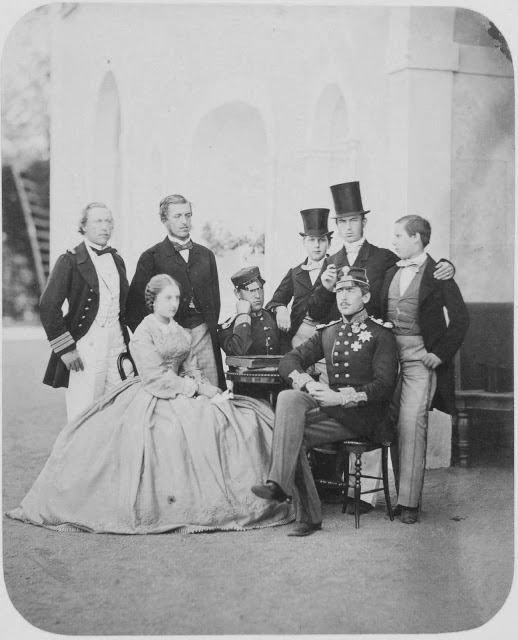
had the most dire results. In that province, they contracted malarial fevers (as they were called at the time), after what appears to have been drinking contaminated water from a well, which soon took on a profoundly serious character. The infant D. Fernando Maria Luiz de Bragança passed away on November 9th, and two days later, on November 11th, King D. Pedro V also died, in the same room where he was born in the Palácio das Necessidades, at the flourishing age of twenty-four years of the same disease, which today is known as typhoid fever, according to the opinion of doctors. It was then that it became known how much he was deeply esteemed and loved. The people only heard of the serious illness of the king and his brothers, they grouped together in great distress around the palace. First there was only anguish and anxiety, then suspicions of crime began to arise, and the death of the infant D. Fernando Maria Luiz de Bragança, the very serious state in which the infant D. Augusto de Bragança was found and the perfectly desperate state of the king , further confirmed the poisoning ideas. Of note is the visit that the king made to Castelo de Vide, on October 7th, 1861, about a month before he died, thus perpetuating the memory of a king who nicknamed Castelo de Vide "Sintra do Alentejo". The monarch had been received in the region with evidence of great esteem on the part of the population, and the news of his death caused great consternation.
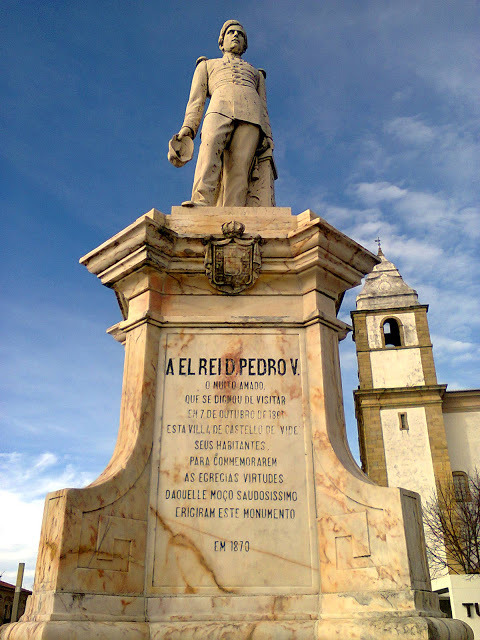
The king's death added to the excitement of the city of Lisbon. The king's two brothers, D. Luiz I of Portugal and D. João de Bragança, who were traveling, traveling, hurriedly returned to their homeland, and arrived shortly after the death of D. Pedro V. Attacked by a disease, with symptoms identical to those of of his brothers, D. João de Bragança also died, in the following month of December. The funeral of D. Pedro V was the most painful expression of mourning that Lisbon has seen since 1834. A funeral without carriages, since from the Palácio das Necessidades to the Pantheon of São Vicente de Fora, it was the procession followed by a countless crowd.
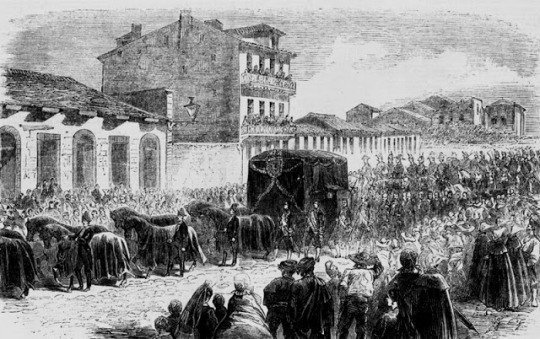
Members of the nobility and clergy were present, deputies and senators, soldiers and writers accompanied the king to the grave who had opened a horizon of hope in national life. Regarding this, Raimundo António de Bulhão Pato (1828 - 1912) wrote: "It was the first time that I saw Alexandre Herculano cry like a child." D. Pedro V lies in the Royal Pantheon of the Bragança Dynasty,
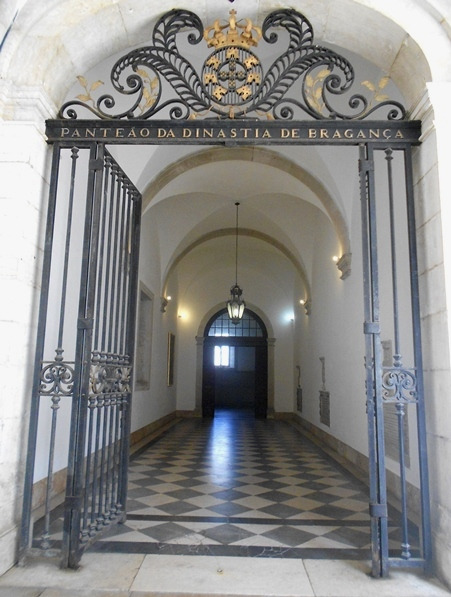
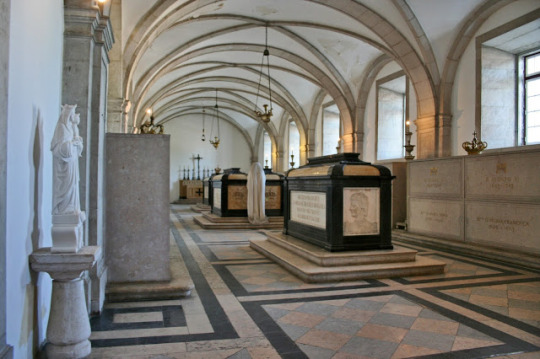

in the Monastery of São Vicente de Fora, in Lisbon. All this gave rise to the Christmas riots, classified by José Estevão in the following famous sentence: "It is the anarchy of pain protesting against the despotism of death." The feeling was general and profound throughout the country. Shortly afterwards, everything was said, since D. Pedro V died a virgin, until he would have been poisoned by those whose personal power overshadowed. Several figures were found guilty without proof, such as the Marquis of Loulé, who intended to take revenge on the monarch for the first resignation of his Government, others blamed the Spanish banker D. José de Salamanca y Mayol (1811 - 1883), creditor of the State for sums he had invested in the construction of the first railway lines and in whose residence D. Pedro V would have dined the night he returned from Alentejo. There are scenes of uncontrolled weeping, contempt, and rioting, crimes on the street by some to avenge the king. Lisbon does not take comfort from the loss it suffered. With the young monarch D. Pedro V it is already a good part of the 19th century that he is going to bury, the belief in the initial values of Liberalism, the fiery support for the constitutional cause, the pride of the country that has yet to be hurt. The following phase of D. Pedro V became famous among many: "Man is short when his tongue is cut." More recently, the writer, novelist and historian Ruben Andersen Leitão (1920-1975), considered D. Pedro V in his work "D. Pedro V Um Homem e Um Rei", as the "first modern man in our country".

However, he can consider himself, assessing for all his life as a monarch, King D. Pedro V as, in addition to the first modern man in Portugal, a king with great competence, endowed with a great culture and a visionary for the your time. He was, like one of his nicknames, a king of hope ... Who knows if Portugal would have taken a different path if D. Pedro V had not disappeared so soon ?!
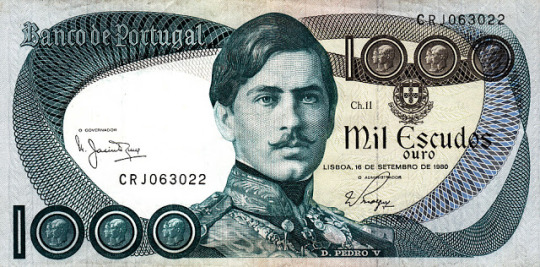

8 notes
·
View notes
Text
Watson’s military service and wounds
In the year 1878 I took my degree of Doctor of Medicine of the University of London, and proceeded to Netley to go through the course prescribed for surgeons in the army. (STUD)
Some more excerpts from Holmes and Watson by June Thomson. They give more insights into Watson’s army days and contribute to building headcanons. I find dates especially helpful. For convenience, I compress the data given there for future reference:
At the end of his year's service as house surgeon [at Bart’s], Watson was faced with a crucial decision about his future career: what should he do next? In order to set up in private practice, he needed capital which he did not possess.
He could remain in hospital service although this had its own disadvantages. Hospitals then employed only four consulting surgeons and, as a consequence, promotion was slow. Watson might have to wait until he was in his forties before a senior post became vacant.
To a medical man, a military career offered several advantages. An army assistant surgeon earned £200 a year, with his keep and living quarters provided. After ten years' service, he could retire on half pay with enough money saved to set himself up in private practice.
Watson’s prep studies for the army:
The Army Medical School at Netley in Hampshire, later called the Royal Army Medical School, was first established at Fort Pitt, Chatham, in 1860 and was moved to Netley three years later when the military hospital, the Royal Victoria, was opened. One of the wards was converted into a classroom while laboratories as well as quarters and mess facilities for the students were housed in separate buildings behind the main hospital block.



(picture source 1 and 2)
There were two courses a year at Netley, each lasting five months, the first beginning in April, the second in October.
The course, which was divided into two parts, covered such subjects as hygiene, including the burial of the dead, as well as military surgery and pathology. Field exercises were also organized during which the candidates were expected to choose suitable sites for latrines, kitchens and dressing-stations.
During their time at Netley, the candidates were expected to obey army discipline, which included the wearing of uniform and attendance at parades. Their duties also entailed caring for patients in the wards.
In February 1880, if the suggested chronology is correct, he became Lieutenant John H. Watson, a rank he never referred to after he returned to civilian life. Assuming he embarked [to India] in March 1880, he arrived in Bombay in April, after a sea voyage lasting a month.
Watson’s probable route to Kandahar: after travelling from Bombay to Karachi by steamer, he then went by rail to Sibi and from there by horse and camel caravan across the mountains to Kandahar, encamping at night.
In the meantime, the war had been gathering momentum. The two forces met at the village of Maiwand, fifty miles to the north-west of Kandahar, in the early morning of 27th July 1880 on a hot, dusty plain dissected by dry water courses. Watson was later to speak of seeing his comrades “hacked to pieces at Maiwand” (STUD), a possible reference to the gallant rearguard action which was fought by the survivors of two companies of the 66th who stood back to back, fighting off the advancing tribesmen until all were killed.
Watson’s injuries:
• a bullet in his left shoulder fired from a jezail rifle, one of the Afghan long-barrelled guns, which shattered the bone, presumably his collar-bone, and grazed the subclavian artery.
• a bullet that damaged his Achilles tendon (“whence come Toby, and a six-mile limp for a half-pay officer with a damaged tendo Achillis” SIGN).
In the face of the fierce onslaught, the defences broke and what remained of the British forces turned and fled, including the medical staff of a field hospital who abandoned their patients, leaving them lying on stretchers. The Afghans remained behind to loot the baggage and dismember all those found on the battlefield, both the living and the dead, assisted by their womenfolk.
Casualties, Watson among them, were transferred to the base hospital at Peshawar, the capital of the British north-west Indian possessions. Here Watson began to recover until he contracted typhoid.
There is no doubt Watson was gravely ill but his statement that “for months my life was despaired of" is a little exaggerated. Typhoid fever usually lasts about five weeks and the time scale will not allow for a protracted illness. No doubt the weeks he suffered seemed like months to him. In fact, he was in the Peshawar hospital for less than two months for by the end of October he was back in Bombay.
He had to make the 1,600 mile journey south by train and boat in time to embark on the troopship SS Orontes which sailed from Bombay on 31st October 1880. Having left Bombay, she called at Malta on 16th November and finally arrived at Portsmouth on the afternoon of Friday 26th November, 'bringing home the first troops from Afghanistan, including eighteen invalids.'
Watson's state of mind: He was certainly bitter. His health, as he himself states, was 'irretrievably ruined' and the prospects of beginning a new career in civilian life seemed bleak. Even his rugby-playing days were over. From the symptoms of which he was later to complain, including sleeplessness, depression, irritability and nervous tension, he was probably suffering from the effects of post-traumatic stress disorder, a condition for which today he would receive treatment.
By the way, at one point, being fresh from the university and penniless, ACD considered joining the army himself but instead grasped the opportunity of earning some money as a ship’s doctor.
When a man is in the very early twenties he will not be taken seriously as a practitioner, and though I looked old for my age, it was clear that I had to fill in my time in some other way. My plans were all exceedingly fluid, and I was ready to join the Army, Navy, Indian Service or anything which offered an opening. [...] I suddenly received a telegram telling me to come to Liverpool and to take medical charge of the African Steam Navigation Company's Mayumba, bound for the West Coast. In a week I was there, and on October 22, 1881, we started on our voyage. (Memories and Adventures)
109 notes
·
View notes